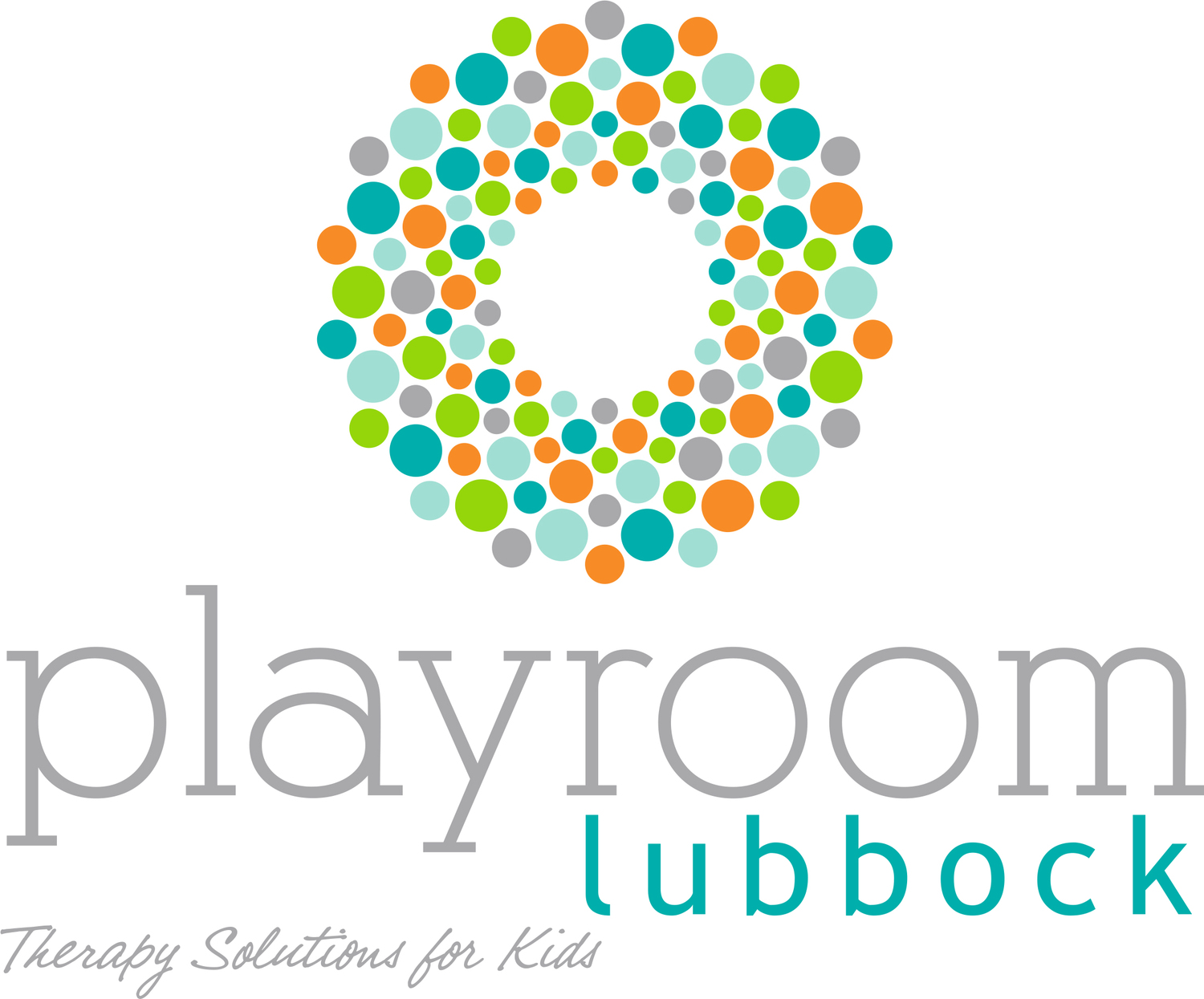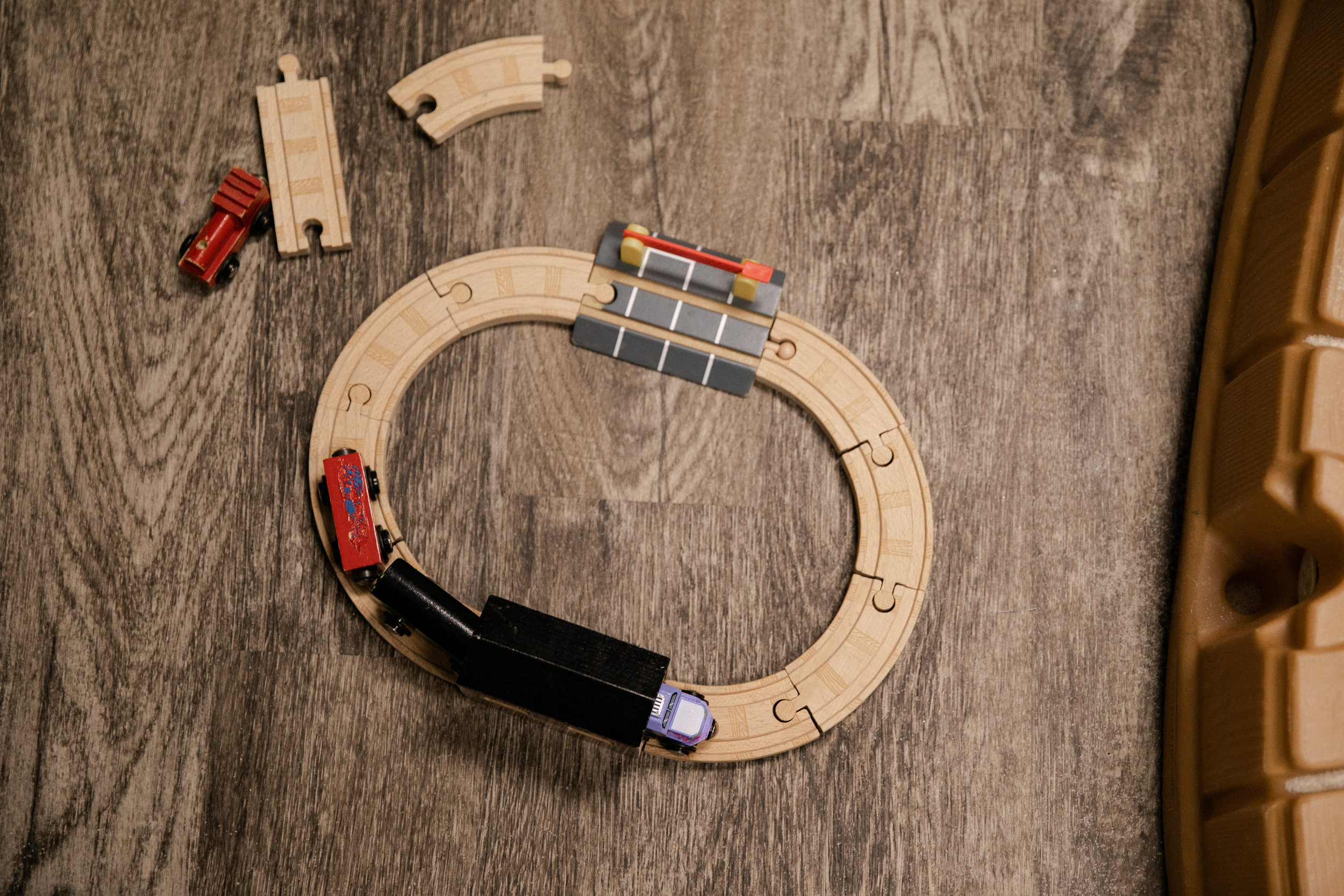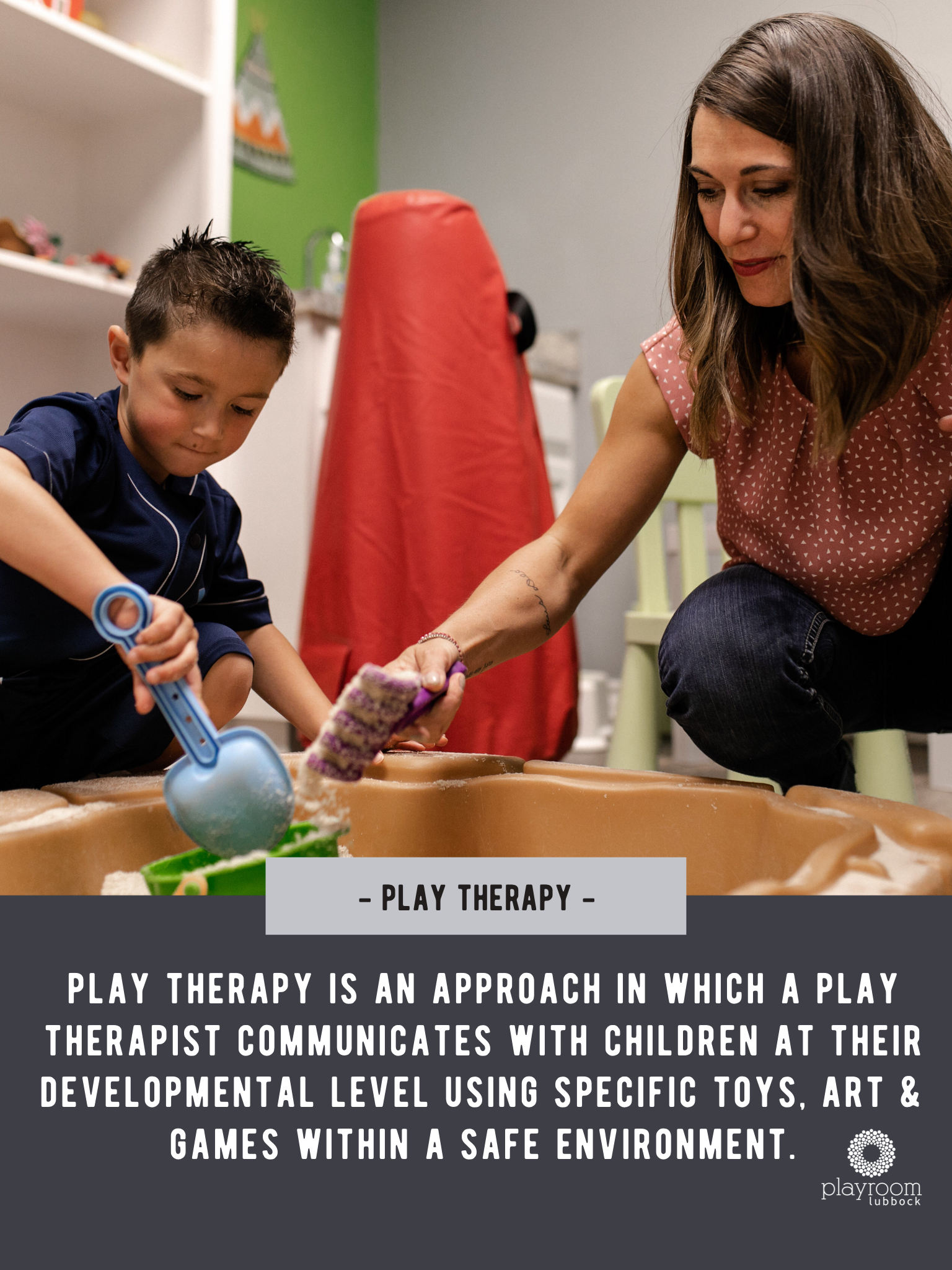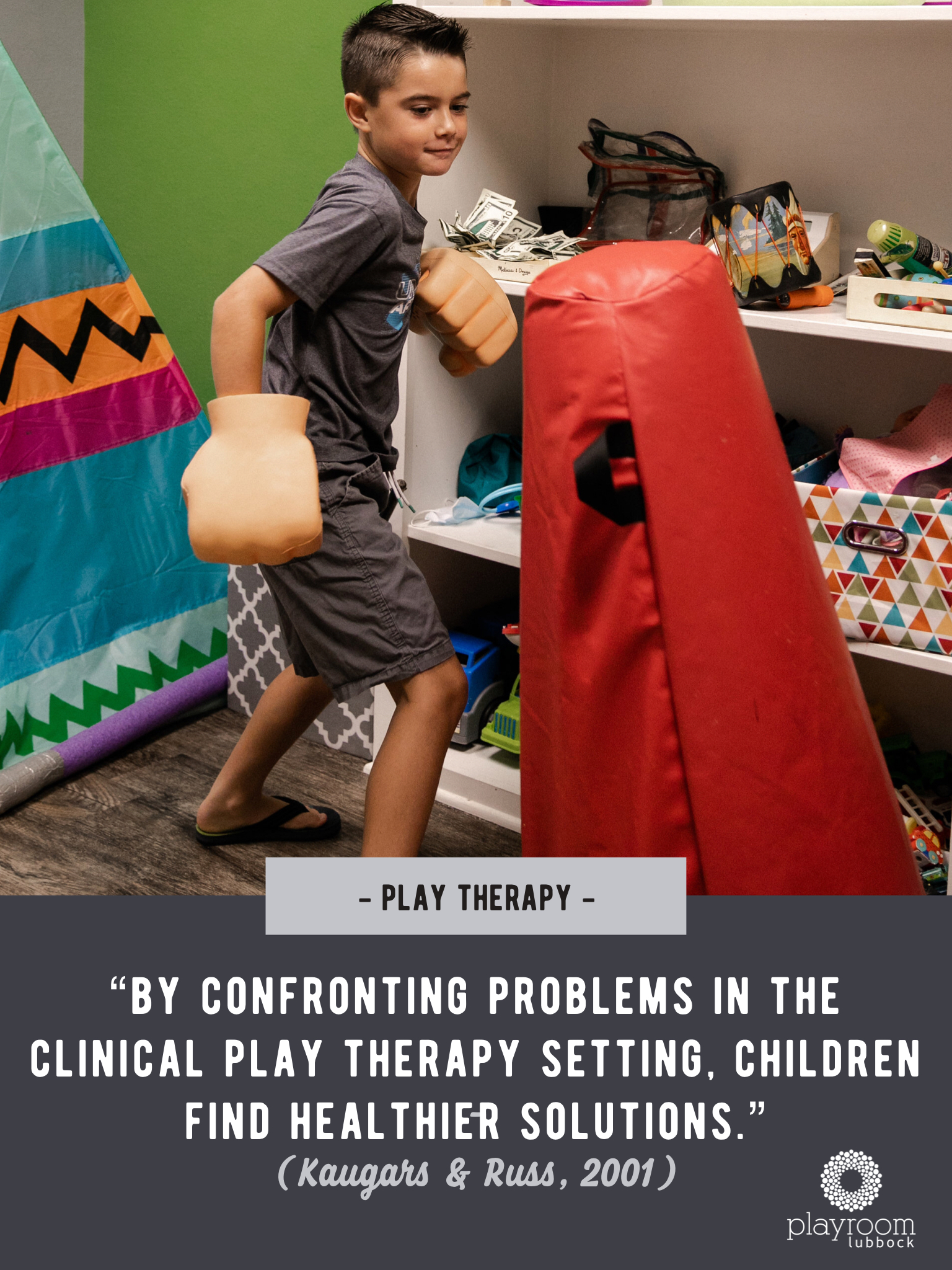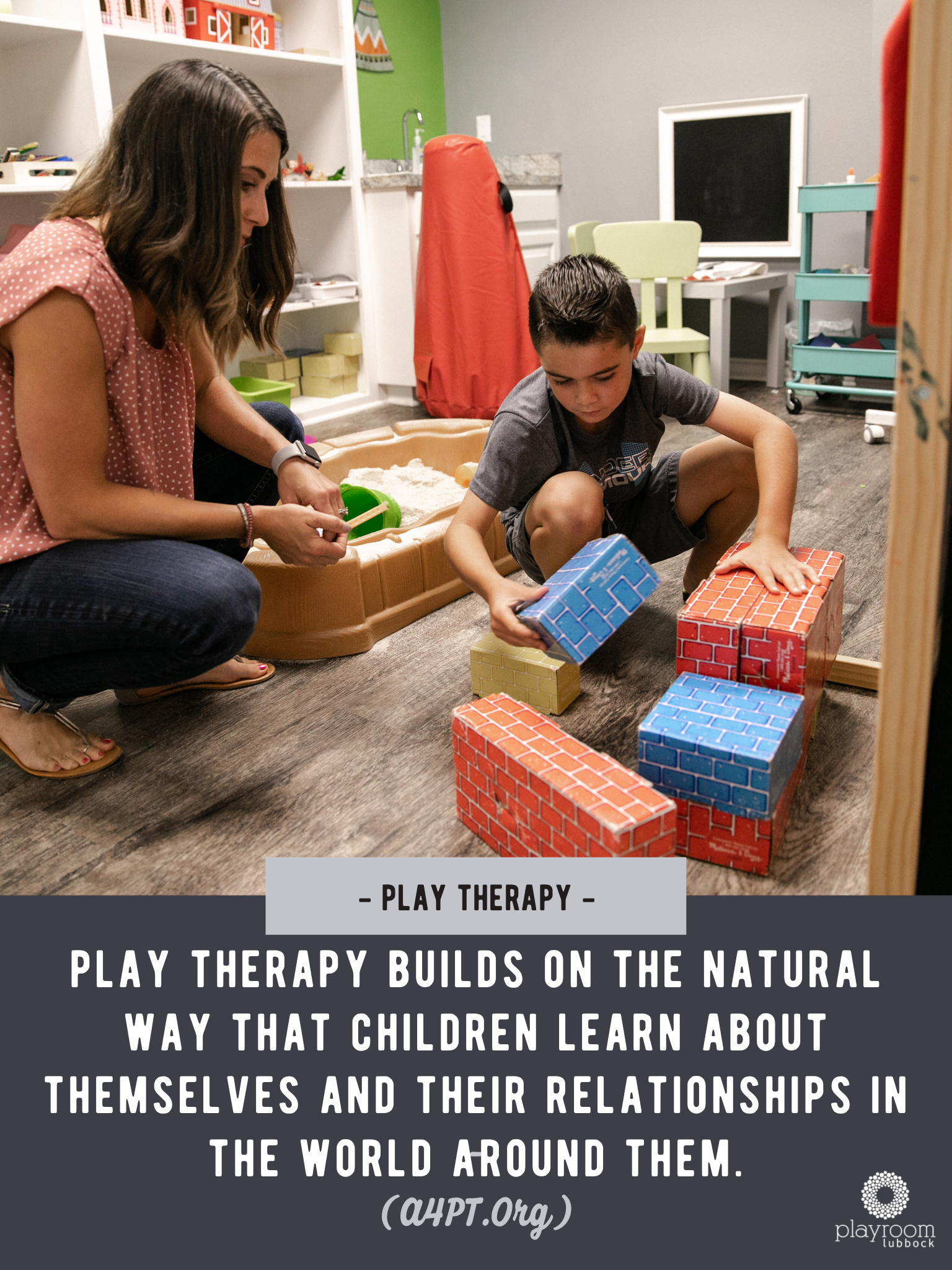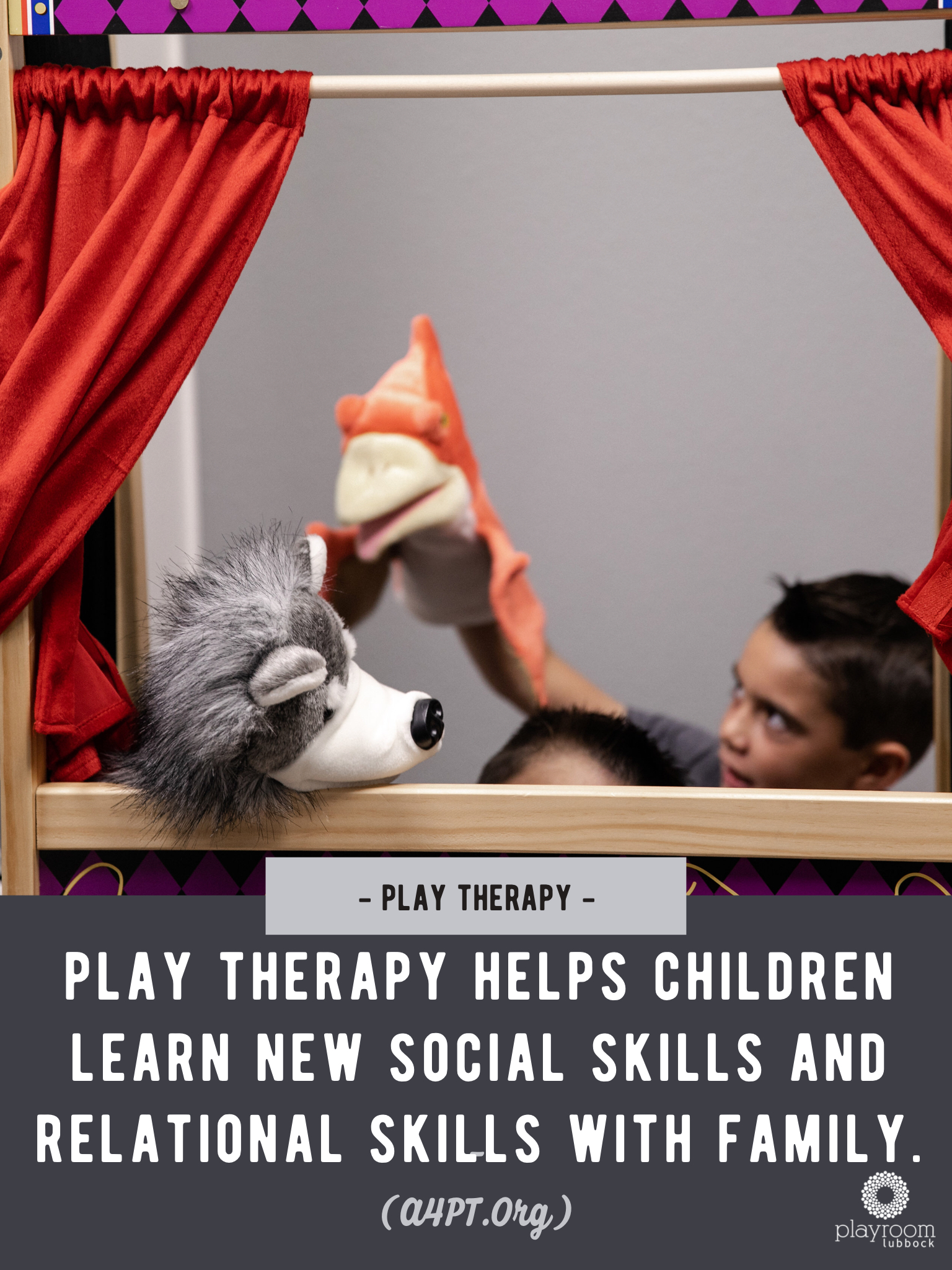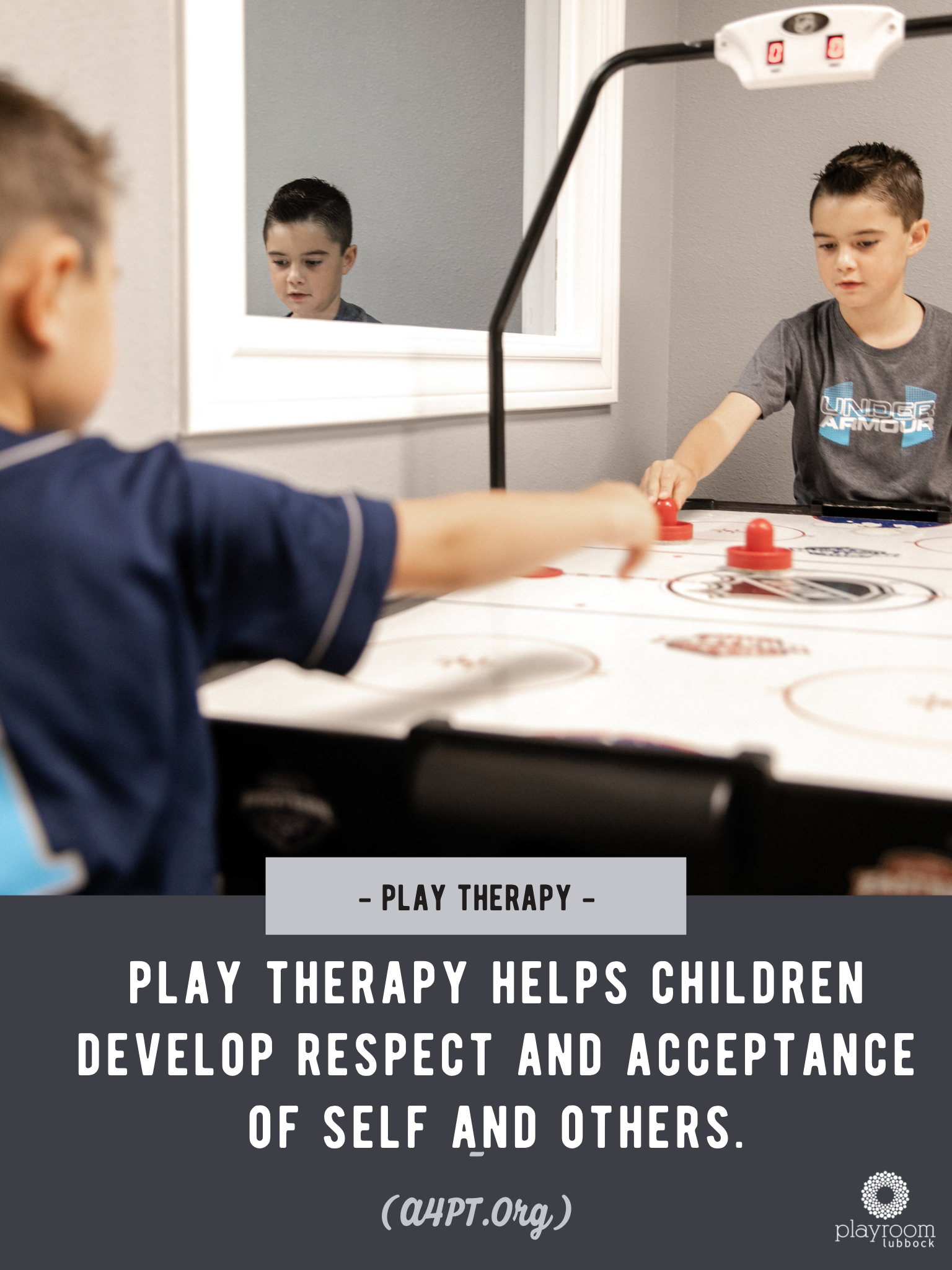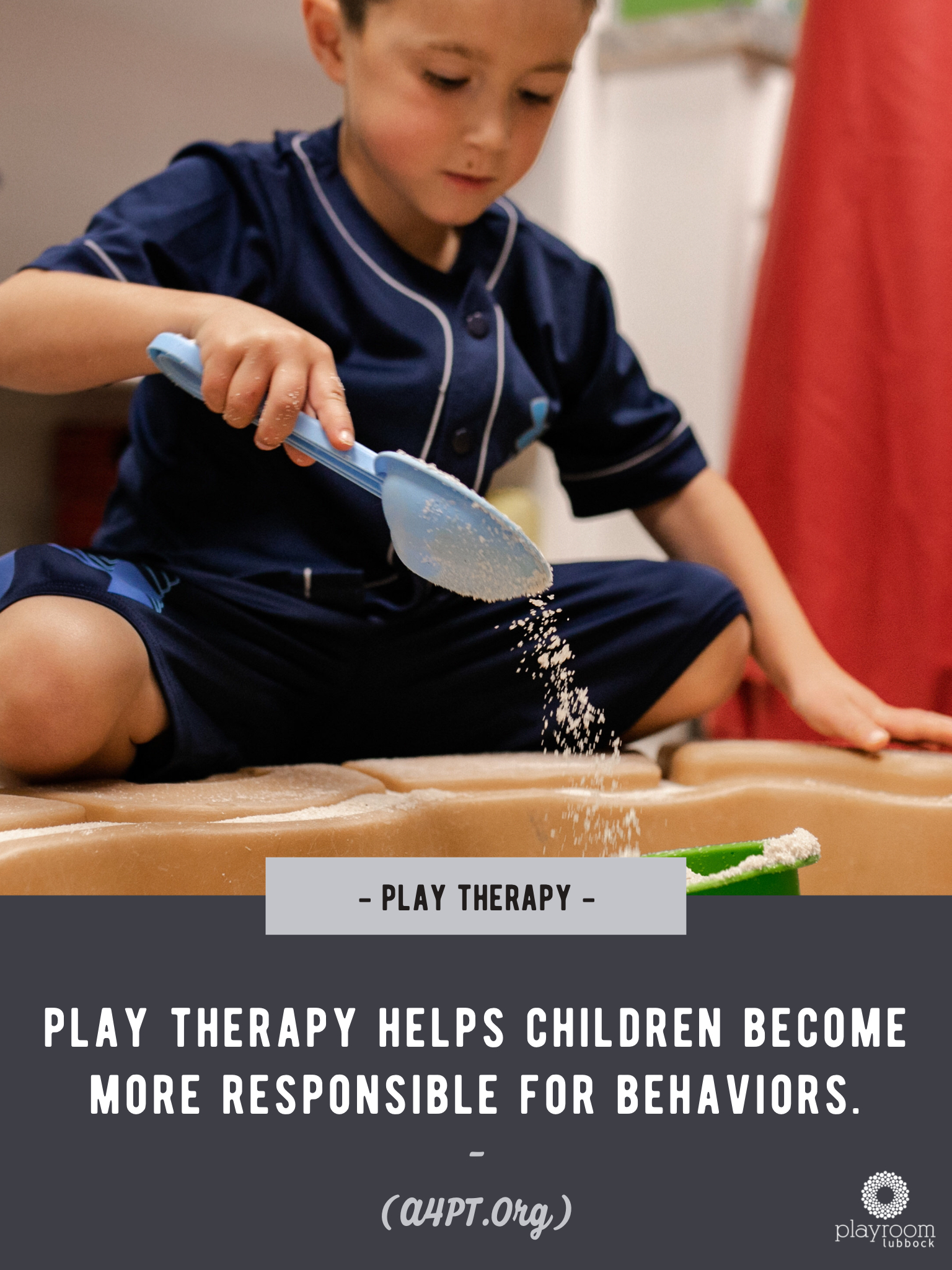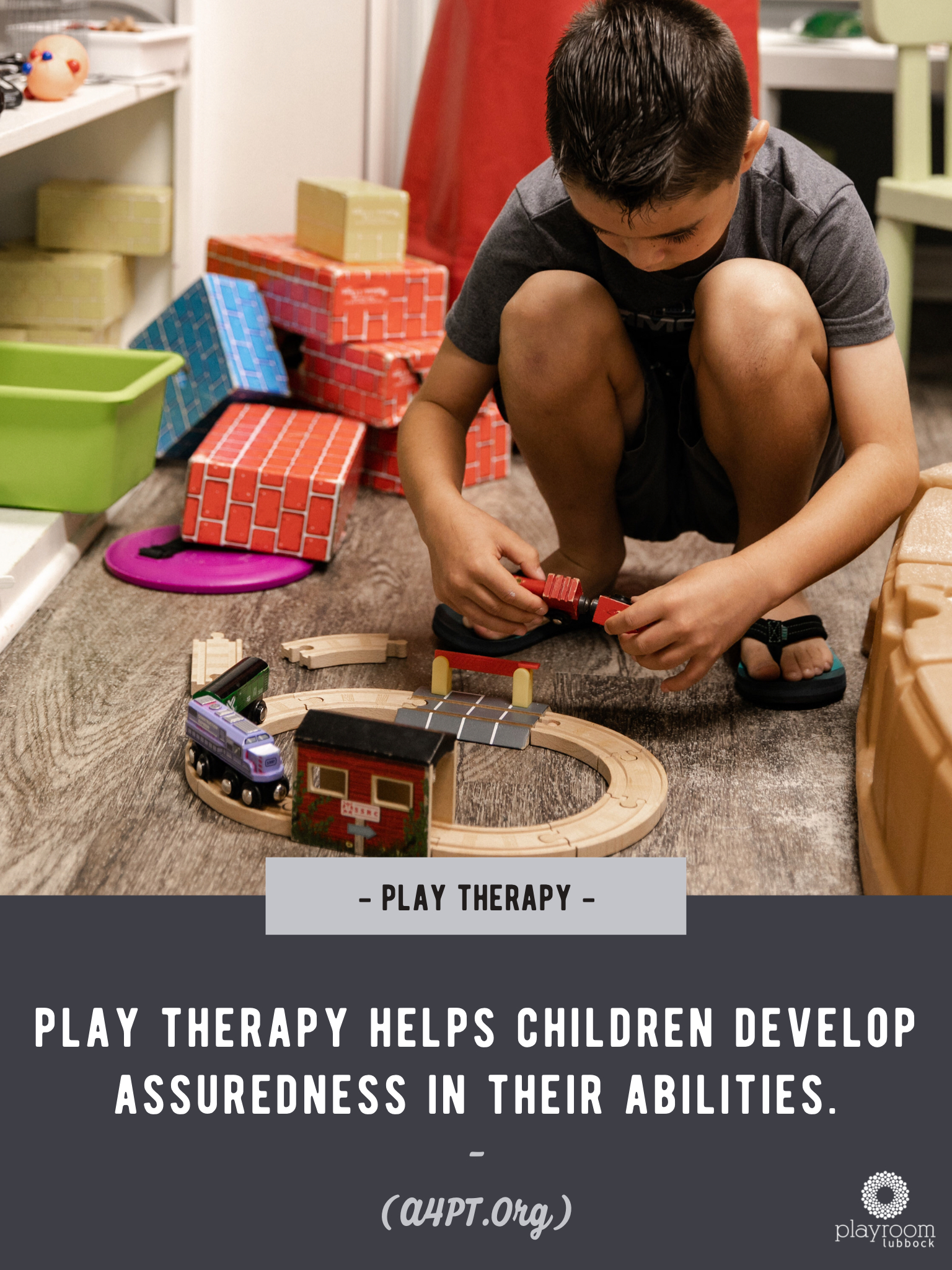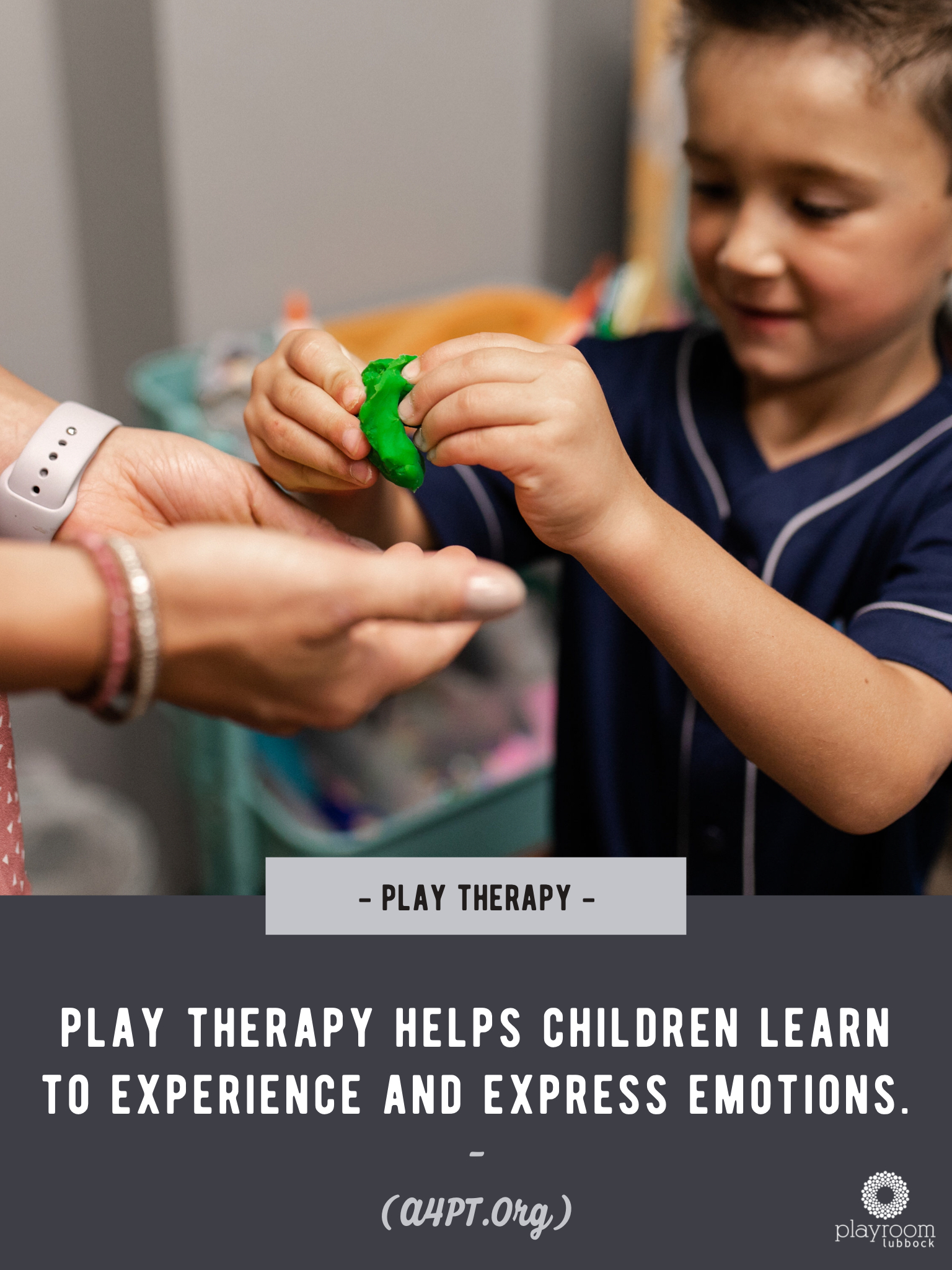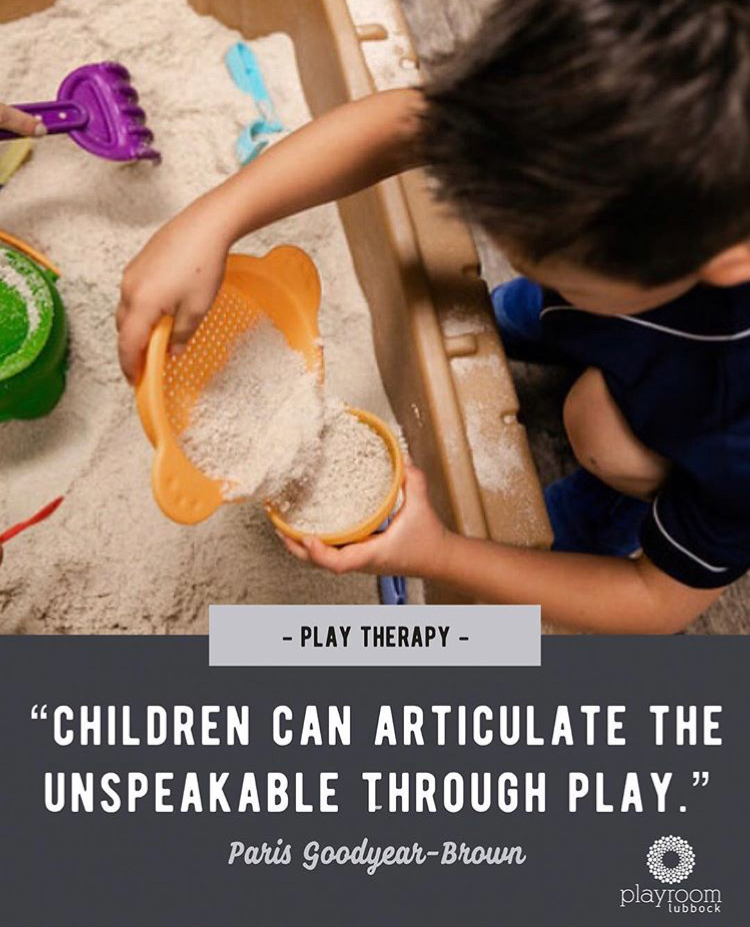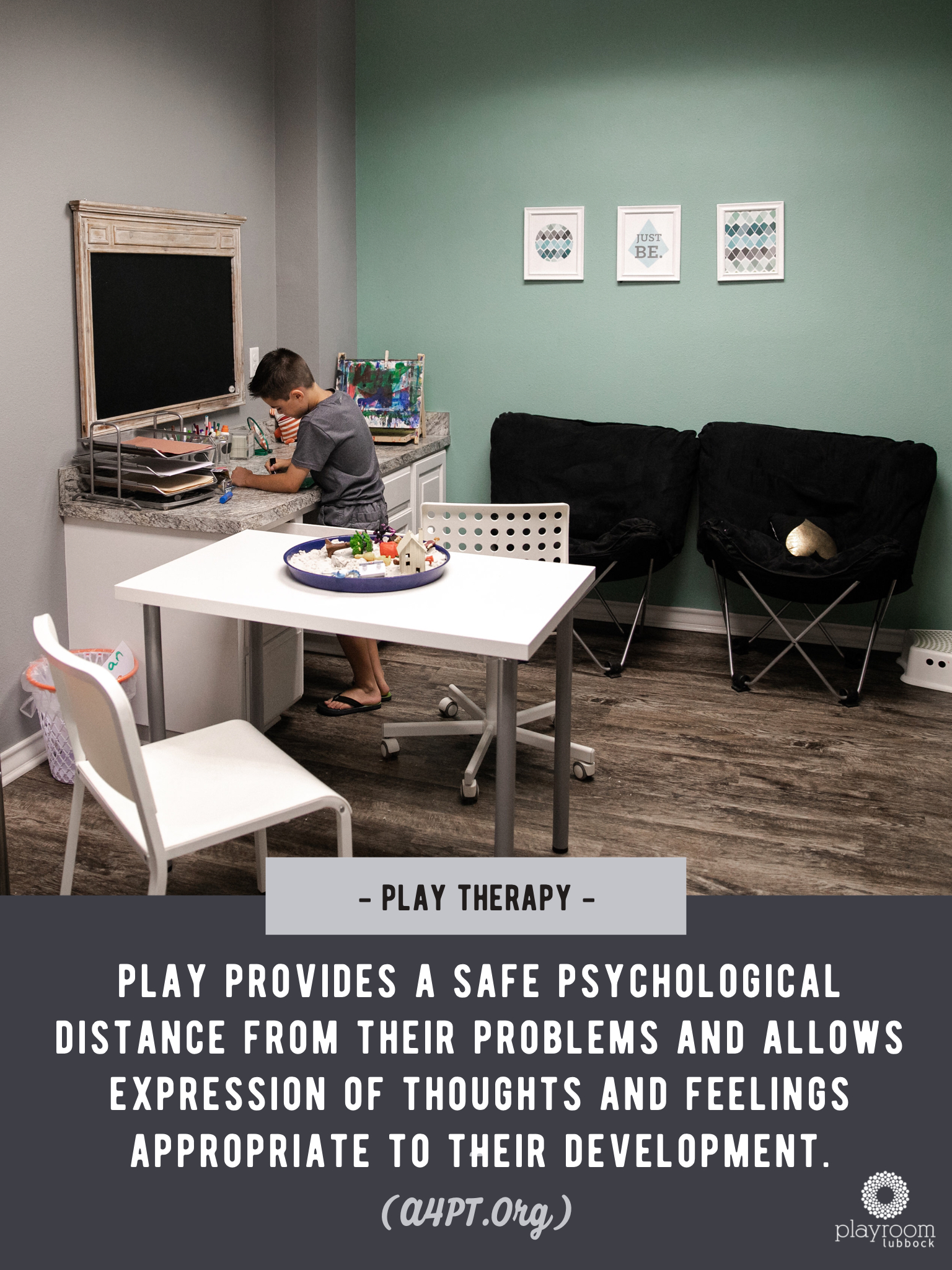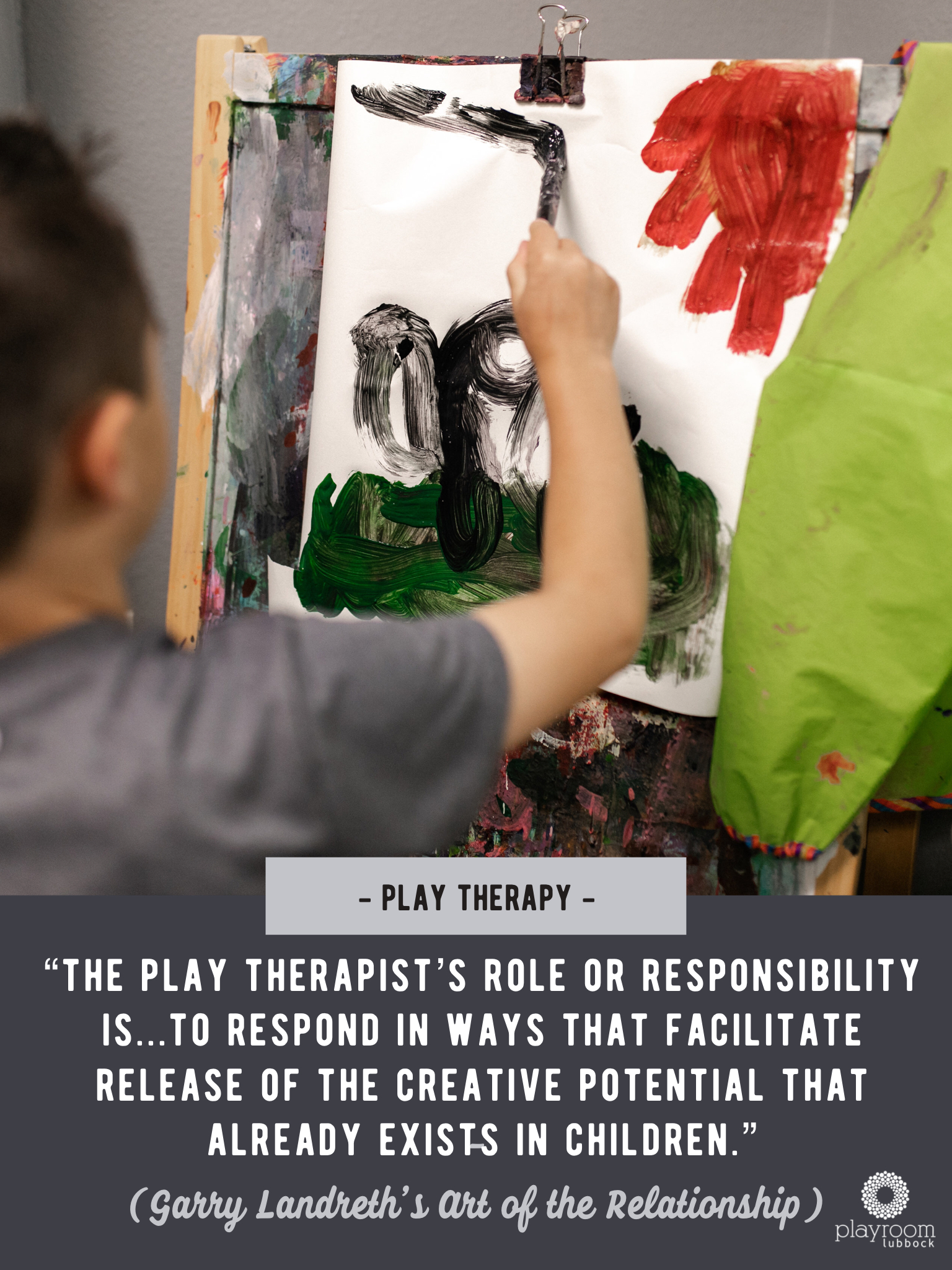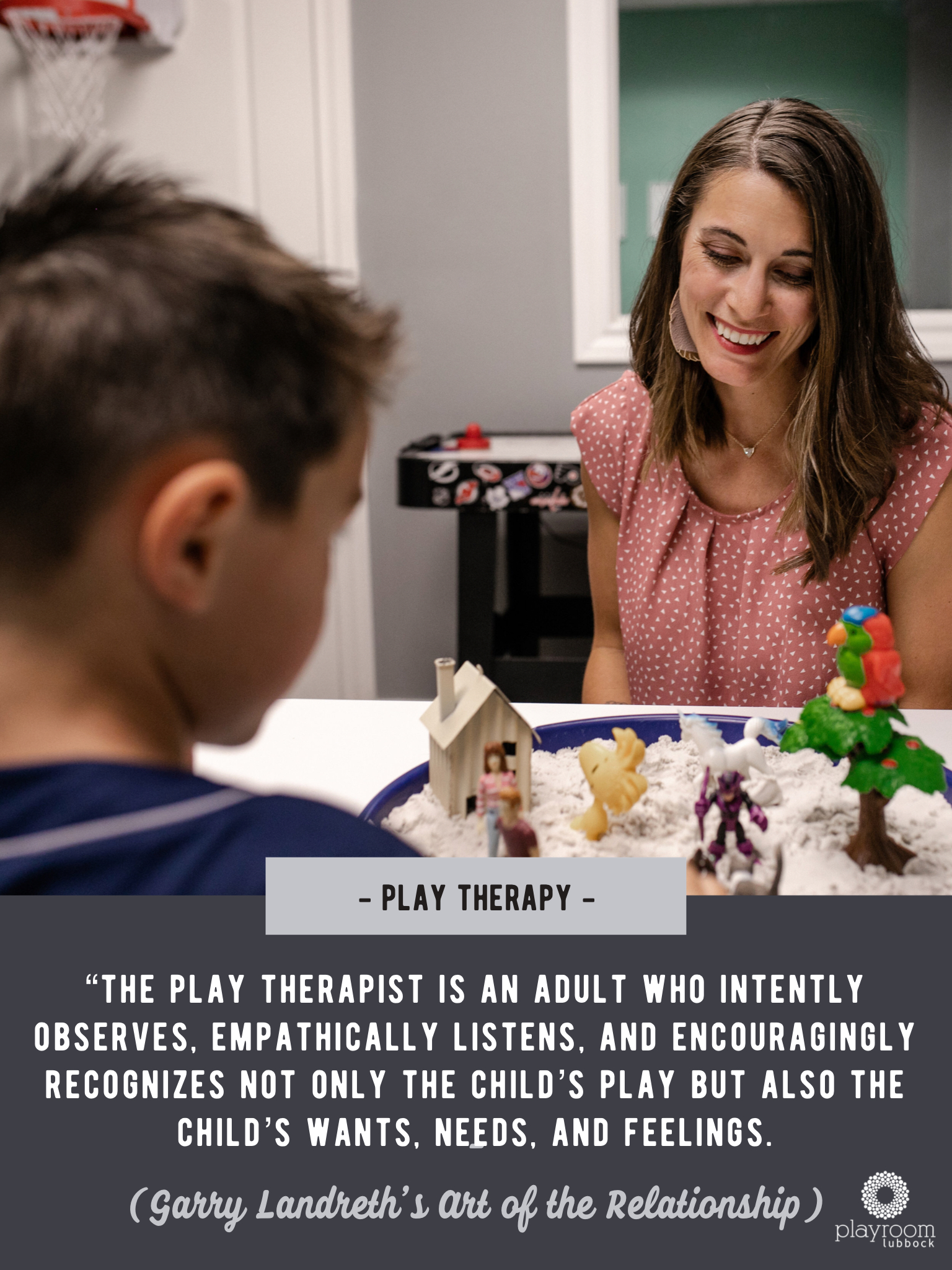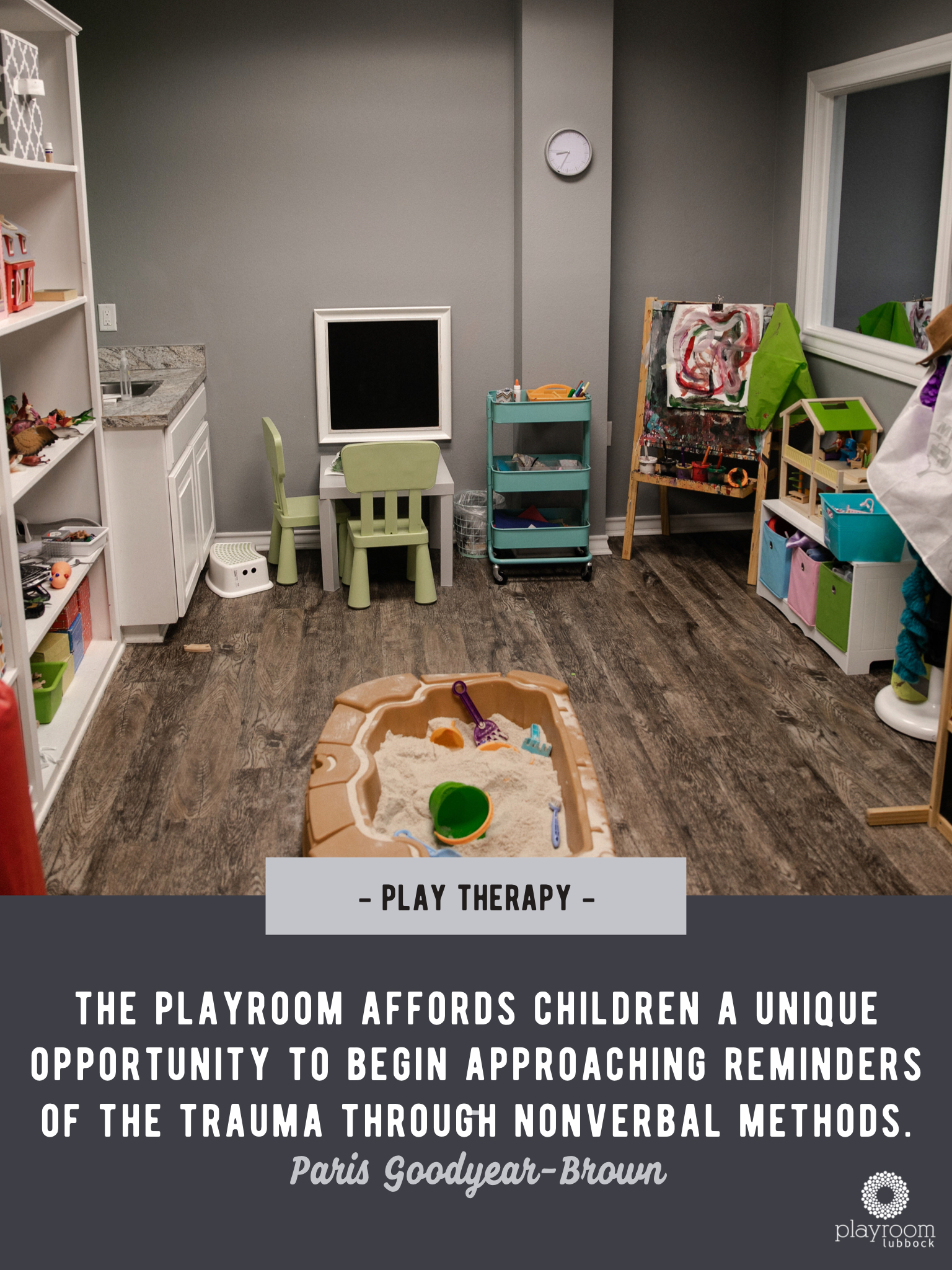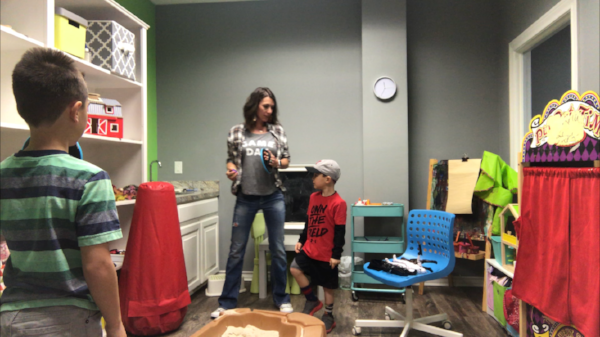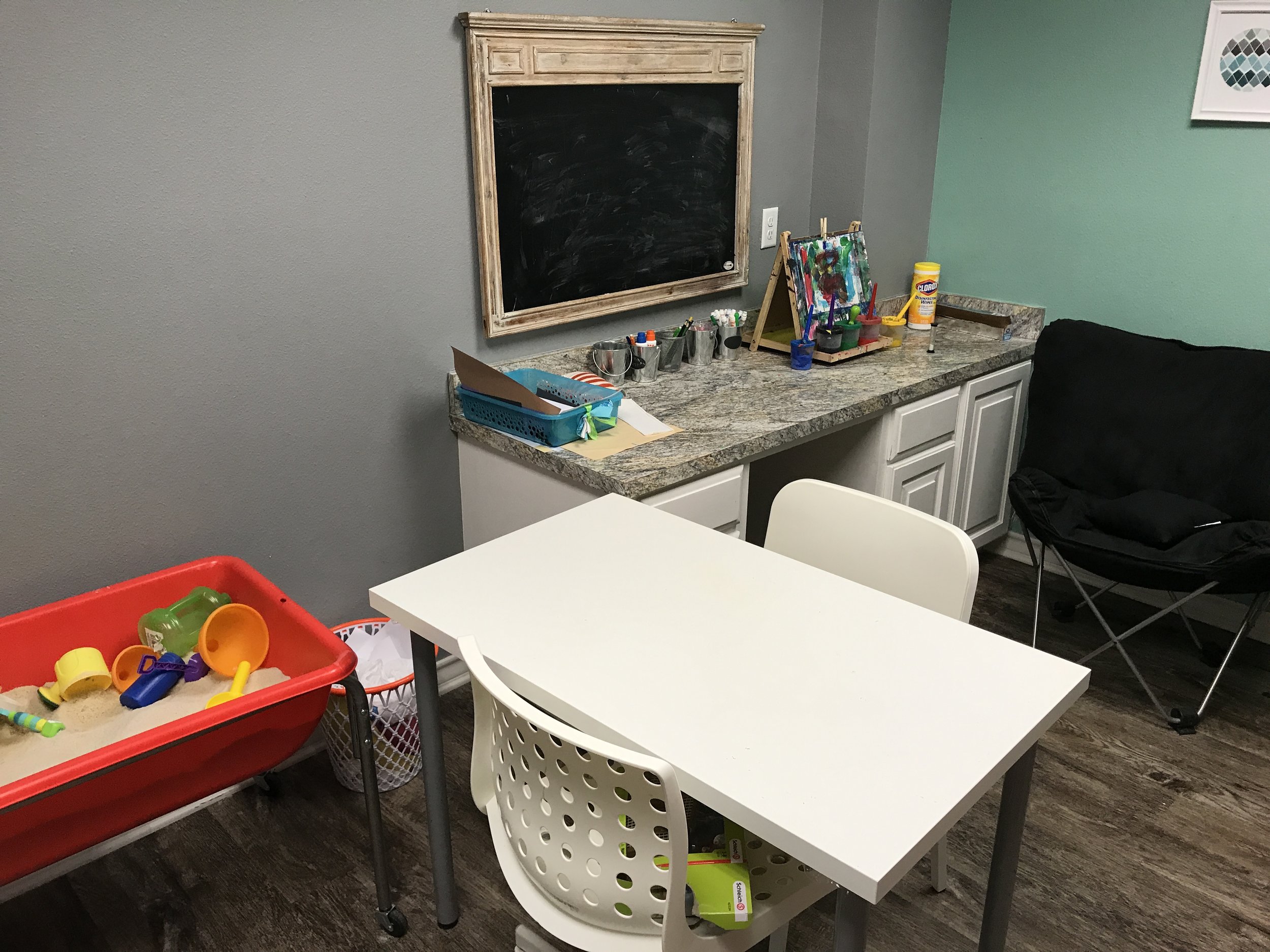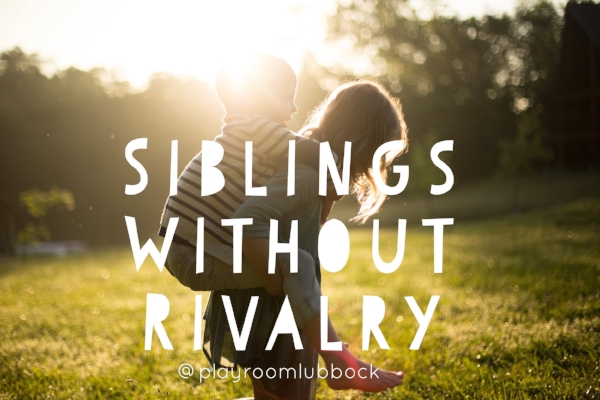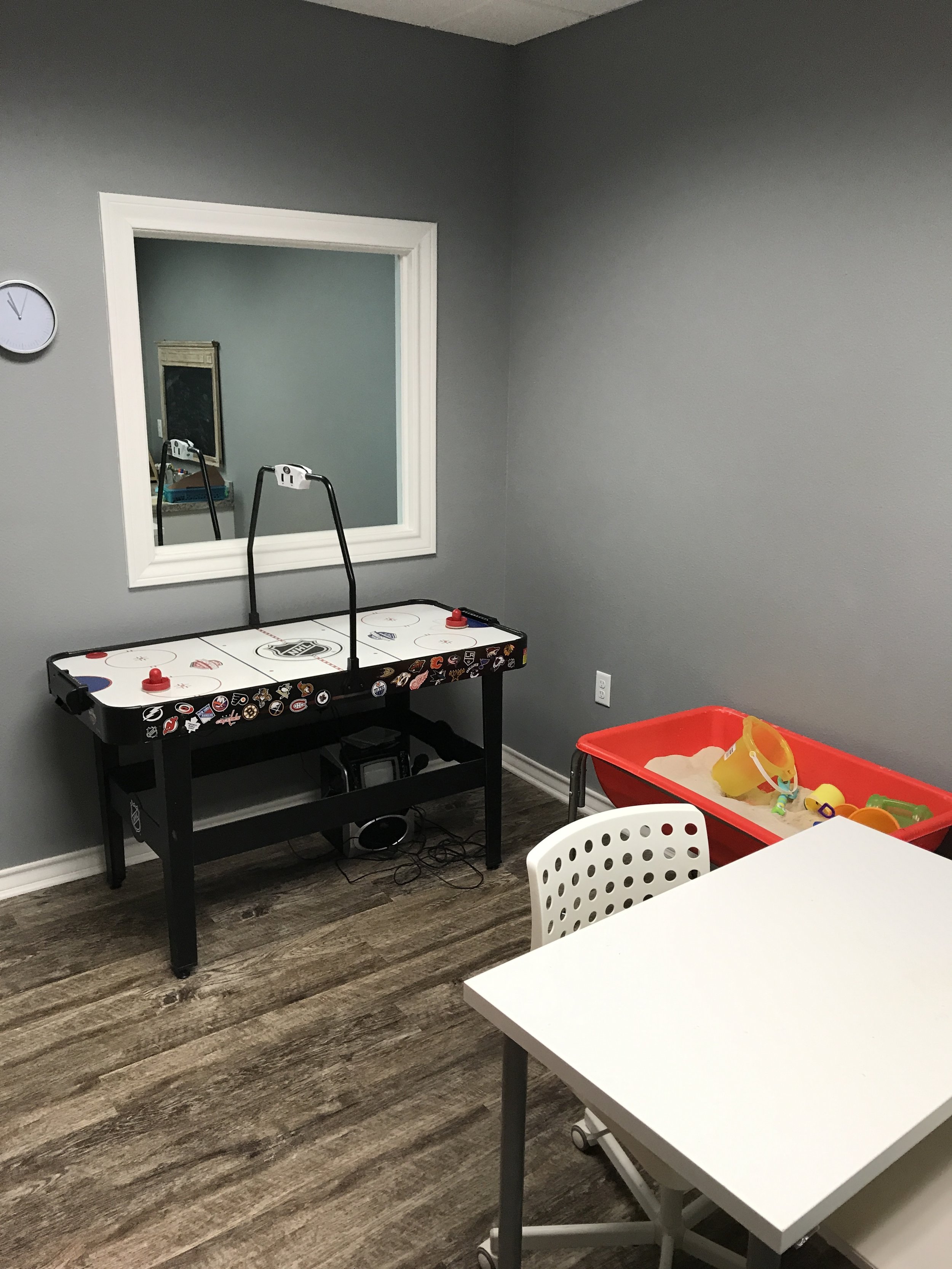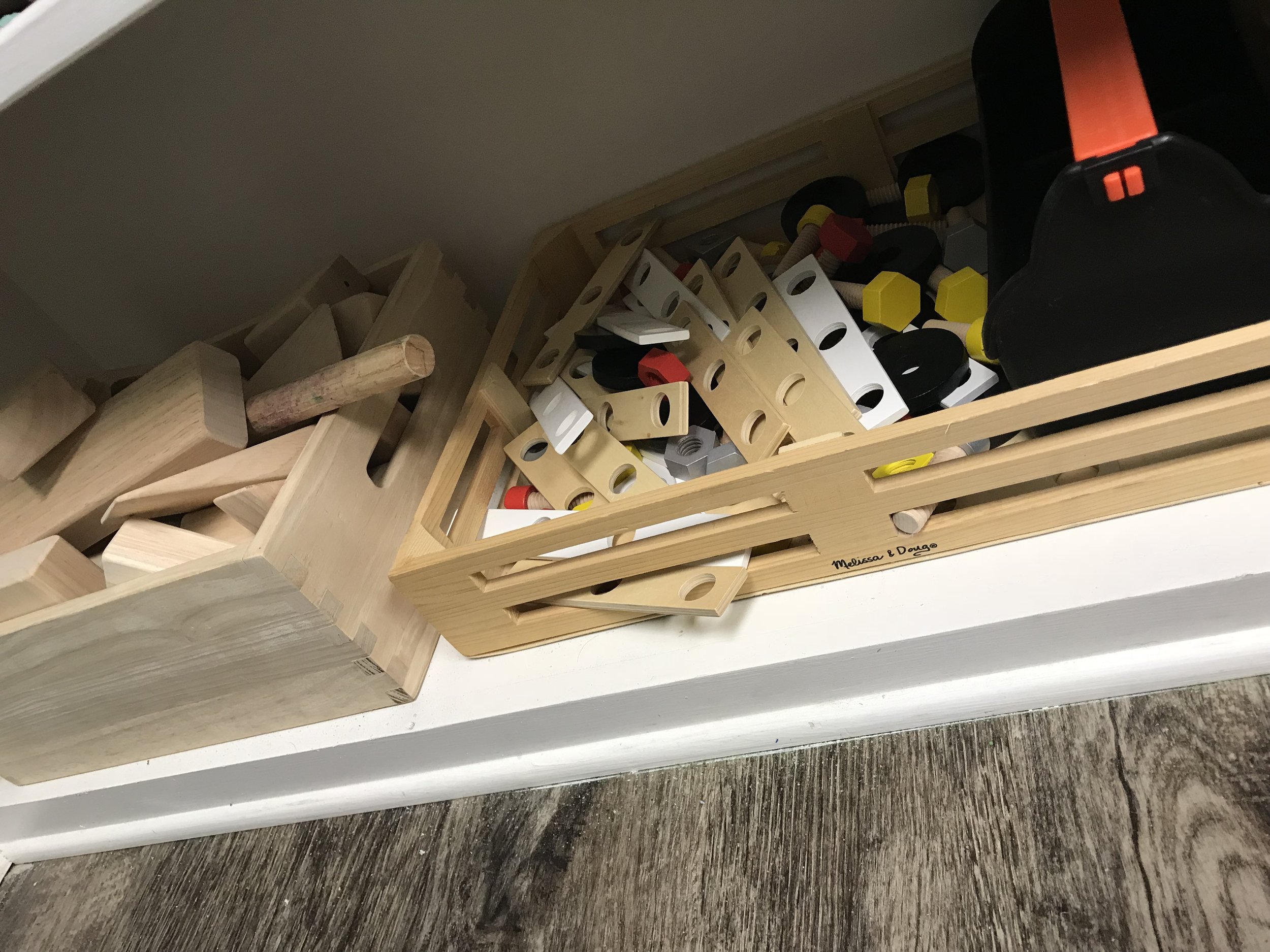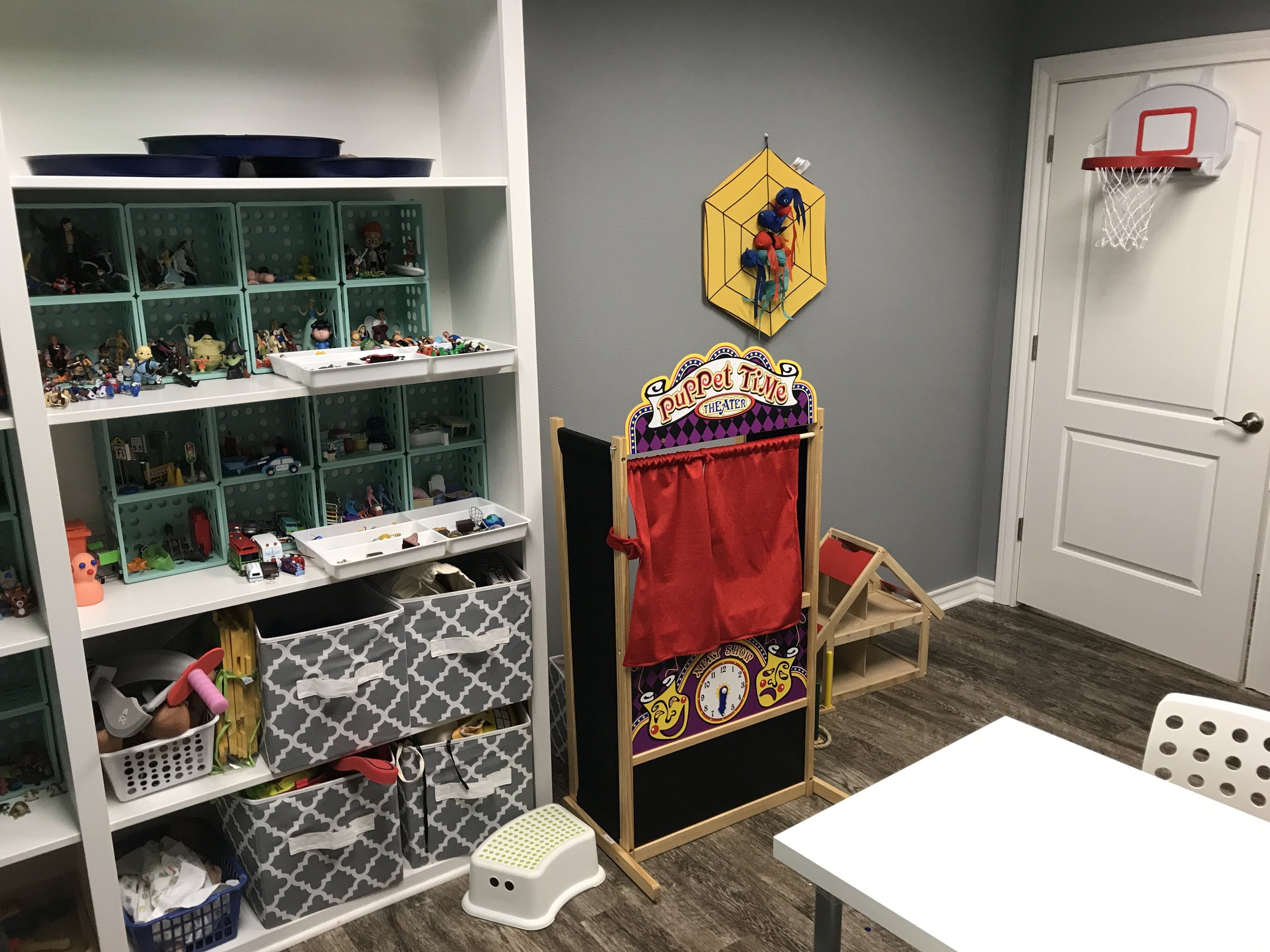How to Handle Hitting and Biting
There is a message in the misbehavior of hitting and biting. It's normal for toddlers and preschoolers to have difficulty managing big feelings and impulses. Often times we misinterpret a child's aggression as being intentional or an attempt to manipulate. Instead, look at aggression as your child's way of communicating. Our young people are still developing vocabulary and do not have the skills to sophisticatedly express overwhelming feelings. Hitting and biting can be a child's way of saying "I need space!" or "I'm jealous that you are playing with that!" or "I want to make my own choices!" Biting may also be an attempt for a child to experiment and test his body's capabilities.
Here are ways to offer your support for your child's emotional development when he or she is hitting or biting.
1. React calmly. When you witness or hear about your child hitting or biting, your first reaction may be tensing your body, heart racing, or your face feeling hot. Breathe and exhale and gently move your child away from the situation. Attend to the child who was hurt with empathy and tenderness.
2. Prepare. Watch your child carefully and take mental notes of things that seem to make your child feel stressed, overwhelmed, frustrated, or sad. Look for patterns such as in transitions, time of day, and other triggers such as overstimulation. Frequent biting in toddlers and older children can often be related to sensory processing issues and an attempt to receive oral stimulation.
3. Use empathy. Use feeling words to build your child's emotional vocabulary. "You're so disappointed that it's time to go!"
4. Set the limit and teach. "You wanted a turn on the slide. Your hands are not for hitting. Next time you can say, Can I have a turn please?" or "No biting-biting hurts! Teeth are for food!"
5. Redirect: Sometimes our children need our support to make a healthy choice. It may mean gently intervening mid-swing at another child. Try using humor and being light hearted "Woah, we're not painting on people today silly, only paper!" Find an alternative for a child to bite when she feels the urge: chewies, ice, biting blanket.
6. Repair. Many natural reactions are to follow up with punishment, but instead, use this time for connection and learning. Give a hug. Sit quietly for a few minutes. Evaluate your child's needs: hungry? tired? Once your child is calm, talk about what happened by putting feeling words into the situation. Forced apologies are meaningless. Build empathy in your child by asking him or her what might make the hurt child feel better.
7. Use connection. If you feel your child is acting aggressively for attention or connection, give him lots of undivided attention throughout the day. Read a book, draw together, allow your child to help with simple tasks, create special moments together.
8. Consider speech and language milestones. Often times a child feels frustration in communication. Is your child meeting his milestones in speech and language?
9. Repeat: Spending time helping your child build the skills and vocabulary is time well spent. Healthy habits may take time to develop.
(Tips compiled from imperfectfamilies.com; Ages and Stages in Parents magazine).
For Parents: What is Play Therapy?
All children adjust to challenges; some need extra help to adjust or cope.
Because of the nature of development, children more easily communicate and express how they feel through play, not as much through words.
Play therapy provides toys and materials so that children can communicate what they cannot say in words.
The play therapist creates a safe relationship through and connection through non verbals and through verbal responses. These therapeutic responses are crafted to reflect a child’s feelings, facilitate their decision making and creativity, to encourage, to set limits, and to enlarge the meaning of a child’s metaphors through play.
Children recreate in play the life experiences that are part of their challenges.
Releasing feelings with a safe, caring, understanding adult helps children feel better.
Children’s play evolves until they gain understanding/comfort over their conflicts/worries.
Children learn to express themselves in positive ways, to control their behavior, to make decisions, and to act responsibly.
They change their personal view of life events, enjoy their interactions with others and feel increased self esteem.
Parents meet often with the therapist to express concerns, talk about their child’s behavior at home/school, and receive feedback.
Parents may be asked to join the play sessions and will be given guidance as to how to help the child or respond to the child.
Children need some degree of privacy regarding what occurs in therapy.
There is a possibility that challenges may “get worse before it gets better”; this is not unusual nor does it mean the therapy is not going to be effective.
(*not an actual client pictured with Kelly above)
Why an LPC Intern Could Be the Right Choice for Me
What is an LPC Intern?
A Licensed Professional Counselor Intern is a counselor who possesses at least a Master’s degree in counseling and has successfully passed their licensing exam (National Counselor Exam). The Texas State Board of Examiners of Professional Counselors has accepted their application for a temporary license. The requirements for LPC Interns are then to complete 3,000 hours of counseling/clinical hours under the supervision of a state licensed LPC Supervisor. LPC Supervisors are not necessarily in session with LPC Interns and clients, but are required to meet with LPC Interns at least 4 hours a month.
What Kind of Experience Does an LPC Intern have?
While in graduate school, students are required to complete field experience in counseling. Most students do more than the 300 experience hours required. Some interns have experience in specialized areas during their practica.
What does Supervision involve?
The purpose of supervision is to promote the development of the Intern’s clinical skills and to provide guidance and professional development to the Intern. The full responsibility for counseling activities of LPC Intern rests fully with the supervisor. The Supervisor also ensures that the Intern remains in full compliance with the rules of the Texas State Baord of Examiners of Professional Counselors. Supervision involves mentoring, evaluation, and case consultation.
Why work with an LPC Intern?
Interns cannot own an independent practice and tend to have a lower “private pay” rate than fully licensed LPCs. Interns can provide therapy for issues that many insurance companies will not cover. Additionally, when one is receiving services from an Intern, he or she is getting the benefit of having 2 clinicians with their skill sets and expertises. Essentially, one receiving treatment from an LPC Intern gains the benefit of not just that person’s knowledge, experience, and expertise, but also that of the intern supervisor’s.
Connecting With Your Child Through Play
“Play can be the long-sought bridge back to that deep emotional bond between parent and child. Play, with all its exuberance and delighted togetherness, can ease the stress of parenting. Playful parenting is a way to enter a child’s world, on the child’s terms, in order to foster closeness, confidence, and connection.”
Children need to play. It’s their work and way of learning skills, making sense out of their world, and processing their emotions. Children release complicated emotions through play. Laughter specifically reduces stress hormones and increases bonding hormones. Laughter can quickly restore an affectionate connection between adult and child. Play helps parents and kids feel closer, helps kids learn lessons better, and increases cooperation.
Connecting with your child through play can be as little as 2 minutes or as long as 10-20 minutes. Here are some ideas to help you get started.
1. Play hide and seek
2. Hold your child in your arms and dance
3. Play a tunnel activity (similar to London Bridge)
4. Give a pillow ride (sit on a big floor pillow as you drag him/her around the room, maintaining eye contact)
5. Play catch! Roll a ball back and forth, bat a balloon back and forth
6. M&M hockey (use bendy straws and blow M&Ms across the table, then the opponent feeds the person who scores a piece of candy)
7. Play toys (follow your child’s lead, refrain from asking questions, use undivided attention)
A Child's Self-Talks Begins with You
Disney's new Christopher Robin was just released and I couldn't help but chuckle at this conversation exchange between Winnie the Pooh and Christopher Robin. It reminded me of what I have recently attempted to encourage parents to do with their own kids to develop self awareness and self concept.
“The way we talk to our children becomes their inner voice.”
Children hear our voices in their minds. Our words and language have a powerful effect. Children absorb our words, tone of voice, gestures, and messages.
As inner speech (self-talk) develops, it is used as a tool for learning. Vygotskian theory emphasizes that in early childhood, languages merges with thoughts (cognitions) in a new way so that children can use private speech (self talk) as a tool for guiding, planning, and regulating their own thinking and behavior. Early on a child relies on adults' external verbal instruction to begin or stop actions. Later in development, children are able to use internal verbal signals to control actions.
Recently I have encouraged parents to use a form of parallel talk to help their children develop an awareness of what is occurring simultaneously in the environment and within the child. Once a child has an awareness of what is occurring, she or he can use the assisted self talk to guide, plan, and regulate his or her own behavior and emotions. Parallel Talk is a technique in which the adult describes what the child is doing or seeing. In play therapy we call this tracking. The therapist describes in a literal, non-interpretative way, what is happening in the playroom to communicate to the child the therapist's presence and attention, and to facilitate awareness. The therapist is putting words (language) into a child's play experience to deepen understanding and processing.
Faber and Mazlish talk about 2 techniques to encourage cooperation in their book "How to Talk so Kids Listen and Listen so Kids Talk."
Describe what you see
1. Describe what you see, or describe the problem. It’s hard to do what needs to be done when people are telling you what’s wrong with you. It’s easier to concentrate on the problem when some one just describes it to you.
"There's a wet towel on the bed."
"There is only one doll stroller and you both want the same one."
"There are lots of kids in here and it's loud."
"When you asked nicely for the toy, your brother gave it to you."
"You started helping your sister, and she had a big smile."
"Your fists are clenched and you feel like hitting something."
Give information
2. Information is a lot easier to take than accusation. When children are given information, they can usually figure out for themselves what needs to be done.
“The towel is getting my blanket wet.”
"Your brother really feels frustrated when toys get taken away from him."
"The drink is starting to spill when walking fast."
"Your shoes are in the hallway. Your dad really appreciates when they are put away."
"The bubble wrap or egg carton (for tearing up) is in the pantry."
“Be a thermostat, not a thermometer. ”
How we react to children's' emotions in situations is important. Our children are highly attuned to a parent's emotions. A thermostat keeps the temperature of a room at a constant temperature. The thermometer rises and falls with the temperature. The more calm and compassionate we are in reacting to our children, the more resilient they become in handling their own emotions. Perfectly attuned parents do not exist, though. A child development expert and Associate Professor of Pediatrics at Harvard University found that even the "best" parents are only attuned to their children 30 percent of the time. We can't expect to be perfectly in sync with our children at every moment, but we can recognize our current state, and remind ourselves that every reaction we express is absorbed by our children, shaping their self talk and their view of the world and of themselves. The more attuned we are to ourselves, the better able we are to react sensitively to our children. Perfection is impossible. Reflection helps us do better as parents.
Provide Encouragement
Encouragement invites self-evaluation and facilitates positive self talk.
“Encourage the deed, not the doer.”
Instead of praising the person or a quality or a product, encourage the effort. Instead of "You got an A. I am so proud of you," try "Congratulations! You worked hard. You deserve it." Praise is not encouraging because it teachers children to rely on approval. They learn to depend on others to evaluate their worth.
Other examples of encouragement:
"You put lots of thought and detail into that!"
"You gave it your best effort. How do you feel about what you did?"
"I appreciate you listening and cooperating."
"That was the first time you've jump roped without stumbling."
The self talk a child begins to develop from encouragement may sound like this:
"I can be responsible!"
"I am proud of what I did!"
"I can do that!"
"It feels good to not give up!"
"I can do lots of things if I work hard."
Parents as Soothing Agents
“When our little people are overwhelmed by big emotions, it is our job to share our calm, not join their chaos.”
Parents and caregivers are critically important in helping children regulate their emotional states. Often, however, it is the very tantrums and meltdowns that spike parents' own anxiety reactions, leaving them unable to respond effectively as soothing agents. You might find yourself attempting to calm your child down through persuasion, coaxing, arguing them out of the anxiety, or rescuing them from the emotion. What if parents stopped trying to change behavior, and changed how they thought about parenting? Parents have the power to adjust their own thoughts and feelings about the struggles of parenting and about what a child's behavior is trying to communicate.
Dr. Dan Siegel proposes "Connection before correction." Parents need to first listen to the child, acknowledge her feelings, and offer guidance. The acronym SOOTHE (developed by Goodyear-Brown, Ashford, and van Eys) helps parents remember strategies to responding to emotional symptoms.
S = soft tone of voice, soft tone of face
0 = organize the child's experience
O = offer choices or a way out
T = touch or physical proximity
H = hear what the child is needing
E = end and let go
Elevation of a parent's voice will only feed the escalation of a child's tantrum. "If parents can choose to lower their voices, use a soothing tone, and remain calm, they will be anchoring the child's experience beneath the current level of escalation." (Paris Good-Year Brown in Play Therapy with Traumatized Children).
A lack of structure intensifies anxiety and dysregulation. Consistent schedules and soothing routines help to organize your child. Offering a narrow range of choices to a child helps to manage the emotion that arises during a decision making process, as well as provide a positive sense of control. A simple touch or physical proximity is meant to reaffirm children and keep the parent child relationship intact. Hearing what your child is communicating is discerning what the child's need is. This discernment will guide your response. Does your child's behavior communicate a need for attention? power? to feel adequate? rest? a snack? Lastly, Dan Siegel (2003) talks about the toxic ruptures that can occur between parents and children when upset occurs but it is never processed. Parents need to acknowledge their right to their own feelings of anger and exhaustion, but also let go of it, and remain responsive to their child after the meltdown has occurred.
Once connection is built, parents can move to the next step and discuss the issue. Helpful questions that encourage connection are: "What happened? How did this anger feel inside your body? How did this feeling make you react? What would be another choice for next time you feel sad?"
If you are interested in more helpful tips, we recommend "The Whole-Brain Child: 12 Revolutionary Strategies to Nurture Your Child's Developing Mind" by Daniel Siegel and Tina Payne Bryson. "Peaceful Parenting, Happy Kids: How to Stop Yelling and Start Connecting" by Laura Markham)
Play Therapy Poster Gallery
Kelly Martin, child counselor and play therapist of the Playroom Lubbock, along with Deborah Faith Photography created a sense of what a child experiences in a play therapy or activity play therapy session. You are invited to click and browse through our play therapy posters and learn why and how play therapy matters and is effective. (Children used in photos are not actual clients. The playroom is our actual play therapy playroom).
Child Centered Group Play Therapy
Kelly Martin, MEd, LPC, RPT in a mock group play therapy session. Children pictured are not actual clients.
In Child Centered Group Play Therapy, a child learns not only about other children, but also about themselves. Children learn to evaluate themselves in light of peer feedback. CCGPT provides the opportunity for children to build self-concept, self-control, social skills, and awareness of feelings.
“In the process of interacting, children help one another assume responsibility in interpersonal relationships.”
“Limit setting and reality testing occur as the group serves as a tangible microcosm of society.”
Pro Tip:
The dynamics of the interaction increase substantially in group play therapy. Everything is potentially intensified. "Children stimulate each other, challenge each other, and activities requiring limit setting are exacerbated. Unique skills and training are required to be effective in group play therapy" (Play Therapy: Art of the Relationship, Landreth). Individual rather than group child centered play therapy would be most appropriate for children who are extremely aggressive, experiencing difficulty due to attachment issues, or sexually acting-out.
Child Centered Activity Play Therapy Room for Teens/Tweens
Child-centered activity play therapy (CCAPT) can be an effective intervention for pre adolescents, because the child-directed nature of the sessions "provides an opportunity for the child to explore his or her growing sense of self in a safe, accepting environment, free from the pressures and constraints of adult expectations: a situation that is certain to be unique for the unpredictably emotional preadolescent." ( Therapist's Guide to Child Development: The Extraordinarily Normal Years, Edited by Dee C. Ray, 2016). CCAPT allows for the development of self-direction, facilitates the growth of an internal locos of control, and opportunities to gain a sense of competence.
Parent Tip:
Parents, you can allow your child to pick a craft or an activity to do together, and practice using reflective listening while engaging in the activity with the child. Going on special outings can also be beneficial.
“Craft Activities can foster the child’s feelings of competence, while active listening from a parent can help the parent to understand the child better and the child to feel understood.”
Reflective listening can facilitate the child being open with the parent about difficulties at school or with friends. The acronym DEAR is a helpful way to remember the components of reflective listening to your child. Kathleen Scott shares how to connect with your child using reflective listening. (GoodTherapy.Org, September 8, 2015).
Detect: Our role as parents naturally consists of advising and telling our children based on our own judgements. Instead, try observing your child's demeanor, behaviors, tone, and words. By practicing detection, you are likely to discover what is underlying the emotions.
Empathize: Try to empathize with your child's feelings without making it about you. What is their perspective? Connect with your child's feelings. "Wow, Jayden. You seem really angry." "I can see your frustration."
Ask: Ask questions out of compassion. Keep the conversation focused on your child's emotions and story before moving forward to addressing the undesirable behavior or a solution. Paraphrase what you hear. Questions should come from a place of wanting more information. "Can you tell me what happened?"
Reflect: Summarizing what you hear from your child can help dampen the powerful feelings. Your child will have the opportunity to step back and reevaluate their statements and feelings. You are teaching your child to regulate emotions through conversation and process feelings. "What I am hearing is that you're hurt because you were made fun of." "What a terrible end to your school day. It sounds like you've been hurt by people you thought were your friends."
Pro Tip:
No matter the age, there is value in play and creative expression for treating emotional or behavioral challenges. Conventional play therapy may seem juvenile to preadolescents and adolescents so a setting and activities consistent with the developmental needs of preteens is essential. Click here to learn more about Child Centered Activity Play Therapy.
Should my child see a therapist
It can be difficult to know when you and your child can work through obstacles and stressors together and when they might need the help of an expert. Significant life events can contribute to problems with behavior, mood, sleep, appetite, and overall functioning. Other times, what has caused a child to suddenly withdraw, worry, stress, or act out is not as clear. The brain was designed to interact so eloquently with the nervous system and the body. We can listen to behavior, somatic symptoms, and emotional responses as communication. Pay close attention to play, mood, and verbal or written statements for a glimpse into your child's internal world. Here are some indications (not a complete list) that that your child may benefit from therapy:
1. He's having difficulties at home, in school, or beyond.
2. She's suddenly isolation herself from friends or activities. Be on the look out for statements such as "Everyone hates me" or "I'm a loser."
3. They’re regressing. When there are major changes in a child's environment, structure, or schedule, kids tend to regress to a previous developmental stage. Bedwetting, clingy behavior, whining, excessive fearfulness, and tantrums may signal a problem if they develop again and persist for more than a month.
4. She's incredibly sad, worried, or withdrawn. If the worry and sadness is interfering with daily function and routine, it may be out of the scope of normal feelings.
5. His sleep habits and/or appetite has changed. Symptoms such as stomach aches, trouble falling asleep, waking up in the middle of the night, nightmares, excessive headaches, or eating too much or too little may be indication of stress or anxiety.
6. They’ve developed self-destructive behaviors or impulse control is decreasing.
7. He talks about death or thinks about it repeatedly. Children typically develop questions or fears about death around ages 4 and 7. If a discussion about their curiosity or concern does not suffice, and questions and worries persist, talking with a mental health professional may be beneficial.
8. You notice signs of alcohol, drug, or other substance use. They’re engaging in more risky behaviors.
“Your body is a powerful intuitive communicator. Intuition allows you to get the first warning signs when anything is off in your body so that you can address it. If you have a gut feeling about your body-listen to it.”
Just as your child's body and behavior are communicating a need, your parent intuition may kick in prompting you to make a call to a mental health professional. It's also helpful to speak to caregivers and teachers who interact regularly with your child. Discuss your concerns with your child's pediatrician, who can rule out any medical conditions that could be having an effect.
How to Handle Sibling Fighting
Help your children live together so you can live too with these simple strategies to handling sibling fighting by Faber and Mazlish's book SIblings Without Rivalry.
Level One: Normal Bickering
1. Ignore it.
2. Tell yourself the children are having an important experience in conflict resolution.
Level II: Situation Heating Up. Adult Intervention Might Be Helpful.
1. Acknowledge their anger. "You two are really mad at each other!"
2. Reflect each child's point of view.
3. Describe the problem with respect.
4. Express confidence in the children's ability to find their own solution.
5. Leave the room.
Level III: Situation Possibly Dangerous
1. Inquire "Is this a play fight or a real fight?"
2. Let the children know "Play fighting by mutual consent only."
3. Respect your feelings. "You may be play fighting but it's too rough for me. Find another activity."
Level IV: Situation Definitely Dangerous. Adult Intervention Necessary
1. Describe what you see. "I see two very angry children who are about to hurt each other."
2. Separate the children.
How do You Find the Right Therapist and Prepare for Your first Session?
Deciding to seek help for something you or your child are going through can be really hard. It may be your idea to seek treatment and go to therapy or it might not. The idea may be well received and provide relief or it may produce reluctance and uncertainty. Either way we want to provide some tips and insight in your search for a therapist and for your treatment journey.
Read moreWhen In Doubt, Connect
A few words on what to do when you don't know what to do. The following blog post is suitable for anyone who has a relationship in any capacity with someone else. I hope that keeps it broad enough. In my practice I facilitate strengthening the parent/caregiver/child relationship. However, the following same principles apply to romantic relationships, friendships, teacher/student interactions, workplace relationships, etc...
It's not often that I quote myself, but when I do, it's because I struck a chord I needed to hear myself. In parenting or in other relationships we may find ourselves at a loss, confused, desperate, hopeless, discouraged, or hurt. It's in those times that we should respond with love and connection.
How do goals of behavior affect our responses?
I frequently talk with parents about a child's goals for misbehavior--that behavior is goal directed and children are trying to fulfill a need. Adults do the same thing except our misbehavior looks differently, but is rooted in the same needs.
In our relationships and interactions with others, we automatically assign a story to our beliefs about ourselves, about others, and about our situations. These beliefs will trigger emotions which trigger a reaction. This reaction is trying to fulfill a need.
When we are are feeling discouraged, challenged, hurt, confused, or hopeless in our relationships, it would serve us well to reflect on what might be the other person's goal and what might be our goal.
Power/Control, Inadequacy/Fear of Failure, Revenge, Attention
1. Goal: power and control. The belief behind power/control is: I belong or I am valued when I am in control or proving no one can boss me.
2. Goal: avoid inadequacy. The belief behind inadequacy/fear of Failure is: I don't believe I can belong so I'll convince others not to expect anything from me. I am helpless and unable. It's no use trying because I won't do it right. OR I will do everything I can to avoid being perceived as inadequate.
3. Goal: hurt, get even. The belief behind revenge is: I'll hurt others as I feel hurt. I can't be liked or loved.
4. Goal: attention. The belief behind attention is: I am valued only when I am being noticed. I'm only important when I'm keeping you busy with me.
What's the best response?
To change a negative attitude you're holding about an individual, you'll need to uncover the underlying belief or goal that's creating your unhappy feelings. Begin by asking whether you believe people, in general, are doing the best they can. Researcher Brene Brown has discovered that believing that you and others are doing the best you can requires compassion. "You may not be absolutely sure about the intention behind someone's behavior, including your own. But being compassionate is about cultivating the attitude that normally people do their best with the tools they have. Compassion allows us to believe that we can all learn from our mistakes, enabling us to grow and change." (ThePropelPrinciples.com)
What's the most generous possible interpretation of the intentions words, and actions of others? (Brene Brown)
Equally, what's the most generous possible interpretation of our own actions?
1. Identify goals of behavior with the most generous possible interpretation.
2. Evaluate whether your reaction is responding to their need/goal AND whether your reaction is self serving your goals of behavior. Are you reacting out of your own sense of inadequacy, need for control, from feeling hurt, or to be recognized?
When in doubt, do something that connects or communicates love.
When we feel at a loss for an appropriate response or don't have the time or emotional energy to calculate goals or beliefs, respond in a way that connects, preserves a relationship, or communicates love. (Remember, another person's response to your extension of connection does not determine your adequacy or value).
Offering connection or love does not imply permissiveness nor does it allow someone to take advantage of or walk all over you. Brene Brown recommends Living BIG: Boundaries, Integrity, Generosity. "Setting boundaries means getting clear on what behaviors are okay and what's not okay. Integrity is the key to this commitment because it's how we set those boundaries and ultimately hold ourselves and others accountable for respecting them." (Brene Brown, Rising Strong).
How Do We Start the Play Therapy/Counseling Process? What parents can expect
When parents begin to notice a child's functioning or well being is being affected by a life circumstance or behavior, speaking to a mental health professional is an appropriate first step. At the Playroom Lubbock we do not require a pediatrician referral. You can simply call our office to ask questions, tell us a little bit about your concerns, and book your first appointment. In fact, when you call inquiring about play therapy/teen activity therapy you will speak directly to Kelly Martin, LPC. Once you book your appointment, Kelly will send via email the necessary consent forms and intake paperwork through a secure client portal. Unless you have custody papers or prior assessment evaluation reports, you do not need to bring any other paperwork to the first session.
The first session
The first session is a parent only session with our children's counselor and play therapist, Kelly Martin. There are several topics that will be discussed during this 45 minute session:
- Kelly's practice policies and privacy policies
- Stages of play therapy
- Background history of the child
- Goals the parents have for both the child and for themselves
- A treatment plan for therapy
Warm and inviting office for parent sessions.
The fourth session
Prior to the 4th session, Kelly will send a parent report form for the parent to complete. This gives them the opportunity to record changes, rate progress, and jot down questions or concerns. Every 4th session Kelly and the parents/guardians come back together for a session to discuss progress, changes, review goals, and to provide support to keep the therapy process moving forward. We continue this cycle of 3 child therapy sessions followed by a parent session.
Value of the parent
Parents and guardians are also an agent of change in the therapy process. Parents know their children best and their insight, perspective, and observations are valued and helpful to the counselor in her work with their child.
Raising Confident, Capable Kids in a Performance Filled Culture
“Children who come to believe that our love, praise, or affection is contingent on their pleasing us and doing what we want them to do become the most vulnerable of all people.”
I have been silently taking inventory of our culture's and many families' perceptions of performance and raising confident/capable kids. What stands out the most is the unintentional reinforced value that performance has on self-worth. What also stands out are misconceptions of grace and confidence which affect children's perceptions of life and faith.
Before we dive in, you must understand as parents, that it is never too late to make improvements. We are easily caught up in performance based parenting and feeling the shame and guilt of not parenting the way we "should" or the way others do. We equate our parenting performance with our self-worth as a parent. We begin to parent out of fear of inadequacy instead out of grace and confidence.
“We grow and change much faster when we shed discouraging thoughts about what we have failed to accomplish.”
To get all of us started in making some improvements, I will be referencing and pulling out pieces from these resources: Raising Self-Reliant Children in a Self-Indulgent World (Glenn and Nelsen) and What's So Amazing About Grace? (Philip Yancey).
In today's culture we are bombarded with opportunities and pressures for our kids to perform or to prove their abilities. How do we carve out self-confidence, self-validation, self-discipline, good judgement, and a sense of responsibility in our children? These capabilities can be nourished in young people through 1. networking 2. finding meaningful roles 3. exploring 4. celebrating 5. setting limits, 6. developing self-control and 7. modeling grace.
First let's understand "perception." When we think through our experiences, we form conclusions about ourselves and our lives (perception). Children make decisions about themselves based upon their experiences. They think about what they need to do to survive or thrive. When a child's perceptions are threatened or when their perceptions are not consistent with the environment, their brain reacts, which sends a signal to their body to react. You've heard of fight, flight, or freeze. Read more about brain science and behavior here.
Perceptions are unique. Perceptions are keys to attitudes, motivation, and behavior. Perceptions must first be supported and challenged in order to change.
Glenn and Nelsen in Raising Self-Reliant Children in a Self-Indulgent World suggest ways of helping children process their experiences and examine their perceptions.
1. Identify: What are the important parts of the experience? What happened? What was the outcome? What were your feelings? What was most important?
2. Analyze: Why was that important to you? What were you trying to do?
3. Generalize: How can you use this information next time? What do you need to repeat to achieve the same outcome?
Nourishing Your Child's Capabilities
Networking
“The simplest of all networks is friendship.”
People are tribal creatures designed for relationships. We excel when we collaborate, teach, affirm, and encourage each other. Who is in your tribe with whom you can dialogue about the world, about life, and about kids?
Finding Meaningful Roles
“Today we need to deal with our young people actively in ways that cause them to believe they are significant contributors rather than just objects or passive recipients of our activities.”
As children find meaningful roles in their family and in their social groups, they develop a sense of importance and personal significance. Focus, direction, a sense of ownership, all help to foster this perception of personal significance. When we listen to our children and take them seriously, we can restore collaboration with them. What are some ways you can offer meaningful roles to your children? How can you incorporate family meetings into your routine? What ritual, tradition, or activity can you devote weekly time?
“The need to be needed is often more powerful than the need to survive.”
Exploring
“Experience, especially one that’s reflected on, is a far more effective teacher than parents could ever be.”
Too often parents or caregivers step in prematurely instead of allowing a child to do for himself or to experience for himself. When parents are too quick to offer an explanation or expertise, the child is left feeling vulnerable or intimidated. They may form the perception of: I am not capable unless they are here. What would happen if they were not there? Rescuer parents rescue children from inadequacy and then enable them to remain vulnerable.
By helping our children explore their experiences, they will develop confidence in their ability to learn and problem solve.
Celebrating
When we recognize effort and progress, we get more results. Sometimes we unintentionally set up a trap for our children by steering them to be independent and then objecting to their way of doing things. Instead, encourage children with specific feedback and acknowledgement of effort.
When we praise the performance or praise the results, we lose sight of the individual and her effort and contribution. Examine how you celebrate your own successes or how you evaluate your mistakes. Do you communicate that self worth and self control are independent of external circumstances?
Setting Limits
“Setting limits is an exercise in using our wisdom and experience to anticipate possible problems and solve them in advance.”
Too often we wait until after something has gone wrong to decide what we'll do about it. We often react with anger and say meaningless things. Determining limits together with a child before a situation occurs will help your child's sense of control remain intact. Using firmness and respect to communicate and follow through with a limit provides opportunity for your child to honor the limit and exercise self-control.
Developing Self-Control
Our children's capability to recognize and acknowledge personal feelings directly affects their ability to select an appropriate behavioral response to a feeling.
“Once children become comfortable with the notion that their feelings are, as are the feelings of others, a legitimate, worthy part of their lives, they are ready to take the next step-to self-control. ”
Developmentally around eight years old, most children are capable of controlling impulses that bring immediate gratification and instead choosing a behavior that achieves a goal.
Philip Yancey in What's So Amazing About Grace chooses the word gratitude for motivation for "being good." We want our children to strive to do well and to have self-control--not to make their parents or God love them (we already do), but because of gratitude and a sense of love within a relationship.
Modeling Grace
“By instinct I feel I must do something in order to be accepted. Grace means there is nothing we can do to make God love us more. And grace means there is nothing we can do to make God love us less.”
Take the initiative to model grace by laying down retribution or fairness. Reinforce your love for your children regardless of performance or behavior. Speak truth and life into your children. Speak to who they are becoming. Forgive. Lay down all of your needs for gratitude and compliments.
We are modeling grace when we allow our children to operate from within themselves, to practice self-control, to explore experiences and opportunities, and to practice their abilities. Regardless of performance or failures, we can gracefully communicate to our children through our attitudes, words, modeling, and forgiveness that they are worthy of unconditional love. This sets the stage for them to explore faith, accept spiritual grace, and to realize their greater worth.
Next Steps
You've read through all of this information, now ask your self "What is the most important thing I've come to realize? What behavior change do I want to make? Why is this realization important right now? How can it make a difference in my life or my child's life? Where do I want to first apply it?"
Complete the following statement: As a result of this awareness, the first thing I will do at the first opportunity is....
Freaking Out, Brain Science, and Resetting Your Body
Racing heart. Sweat. Labored breathing, Uncontrollable crying. Chest tightening. You feel like you're going to DIE. Your body is reacting to perceived danger in your brain. Your unconscious mind has picked up a signal that you are unsafe and your body needs to activate for protection. When your brain senses danger, a messenger relays that information to your amygdala from your brain stem before your cerebral cortex can process it and make sense of it logically. The message is Fight. Flight. or Freeze.
What are "threats" or "perceived dangers" to the brain?
1. Threats to basic human needs both physiological and safety needs. Not only are traumatic experiences threatening, but physiological and love needs can also trigger a response. H.A.L.T stands for Hungry, Angry, Lonely, Tired. Are you feeling any of these?
2. "Shoulds." The "shoulds" are expectations you tell yourself. I should be more...I should have done this...I shouldn't be like that...I should...I should...I should. Go ahead--start writing a list of your "shoulds" as you realize them. We all have the "shoulds."
3. The Unknown. The unknown can be frightening. The unknown of the future. Of the unexpected. Of how your body will respond. Of outcomes. Unpredictability. Really, the unknown can go on for infinity.
4. Contradictory Messages in the Environment: Mixed messages in an environment are threats to the brain. Double standards. Unpredictability. For example: A parent who either encourages or "forces" a child to do an activity, and then criticizes his effort. Or a partner who is a completely different person under the influence of alcohol.
5. Implicit Memories. These are memories that rise to the "surface" of the brain, although are not recognized as a memory. It is when something happening now stirs up a memory from the past when you felt similarly--even though the current situation may be completely different. There is no time stamp either. For example, a scent associated with a past event may bring about an emotional response, yet the individual is unaware that scent was associated with the memory.
Dysregulation vs Defiance
This physical response to a perceived threat is called dysregulation, and it happens to both children and adults. The difference for a child though, is typically, he/she does not have the tools and skills to express this intense whirlwind. He/she often shuts down or acts out in order to release or suppress that energy. What may look like defiance is actually a physiological response to perceived danger. Defiance is intentional and motivated by a desired outcome. Dysregulation is governed by the nervous system. Try telling a dysregulated nervous system that "there is nothing to be afraid of" or to simply "calm down." Or "he just needs a spanking." It's like sending an email through the mailbox in your front yard. You're sending a message through the wrong channels in the brain.
Symptoms of Dysregulation
We are all very much aware when a dysregulated individual is in a hyper-aroused state: Aggression, disorganized, alert, excessive motor activity, uncontrollable, irritable, anxious.
But, a hypo-arousal state looks and feels much differently. It's easier to misperceive. Tired, automatic obedience, appears life-less, non-expressive, numb, lack of motivation, isolated, helplessness.
Respond More Effectively
Mindfulness is key. Mindful awareness practices activate and harness the power of the prefrontal cortex in order to respond more effectively. As you repeatedly practice something, that state becomes a trait. You rewire your neurons. How cool is that?! Daniel Siegel discusses this here.
Mindfulness is simply recognizing what's going on inside (our internal experience) in order to shift our internal experience. When we are more aware of what is happening on the inside, then we have more freedom to make a different choice in our response. This self-awareness allows people to stay connected to themselves in overwhelming moments. Self awareness allows the brain to think rationally, thus giving more choice and control over a response. Modeling is the best way to teach mindfulness. Check in with yourself throughout the day, particularly with your body. Notice what is happening to your body in regards to temperature, sensations, and movement. What parts are tight or clenched? What parts are relaxed? Notice and breathe. We want our mind to be an active participant--when we bring our attention to our body, our brain is less likely to "jump to conclusions" about what is happening in the situation or in the environment. The more we model and teach our children to be mindful of the body, overtime, patterns that we have been stuck in, will begin to soften and release.
Reset your body
Grounding exercises are designed to bring your awareness into the present moment which reminds our bodies that we are actually safe from harm. Adrenaline and cortisol then can be reduced.
“When we change our perceptions, we change the symptoms in our nervous system.”
Lisa Dion compiled a list of activities to help return our bodies to a more regulated state.
- Run, jump, spin, dance, bounce on yoga ball, crash into something soft, roll on the floor
- Sit in a chair and push up by straightening arms
- Massages, deep pressure on your arms and legs
- Eat something crunchy
- Drink through a straw
- Take a bath/shower
- Wrap up in a blanket
- March or sing during transitions
- Play music
- Carry something heavy
- Do a wall push up, or press hands together firmly
- Run up/down steps
- Hang upside down
- Play sports
- Doodle
- Hold a fidget (koosh ball, rubber band, silly putty)
- Dim the lights/Turn on the lights
- Swing
- Yoga
- Breathe
Seek Professional Help
A healthy and effective therapeutic relationship with a counselor will provide an opportunity for you to examine and understand your perceived threats in a safe, empathic relationship and environment. For children, therapy involving play, sand, and activities will increase self-awareness, acceptance, regulation, and self-control. A therapeutic relationship can connect at both the brain and heart levels that promotes new growth and neural pathways in the brain as well as heal any hurts in the heart.
Preteens Benefit from The Playroom Lubbock Through Activity Play Therapy
Often times people wonder how play therapy is used with preadolescents. No matter the age, there is value in play and creative expression for treating emotional or behavioral challenges. Conventional play therapy may seem juvenile to preadolescents so a setting and activities consistent with the developmental needs of preteens is essential. A a licensed counselor for children, I use expressive arts and other age-appropriate play activities to help older kids/teens work through thoughts and feelings they are either unable or resistant to express verbally. The foundation of play therapy remains the same: play is the language and toys (or objects used in their activity) are the words.
“Appropriately structured creative art activities provide preteens with opportunities to change perceptions about self, others, and the world as they try out new roles and solutions...Furthermore, [they] facilitate a process of self-development, providing the preadolescent with the inner resources to cope with future difficulties.”
I purposefully select games and activities (as outlined in Bratton and Ferebee's article) that promote creative expression, encourage the release of feelings, facilitate the acting out of real-life concerns, and encourage effective problem-solving and coping strategies. The child has the freedom to creatively interpret the assignment.
“There was a child went forth every day,
And the first object he look’d upon,
that object he became,
And that object became part of him
for the day or a certain part of the day,
Or for many years or stretching cycles of years.”
Please take a picture tour of my activity room for older kids/teens. I am continually adding games and objects that aid the therapeutic process. You will notice the inviting and stimulating room for kids to explore, create, and expend energy. Equipment includes an art desk, easel, puppet theater/puppets, sandplay unit and figures, comfortable chairs, dress-up clothes, ball games, art materials, toys for symbolic acting out (dolls, punching bag, knives, swords, etc..), building blocks, toaster oven, and do-it-yourself project kits.
Source: "The Use of Structured Expressive Art Activities in Group Activity Therapy with Preadolescents" by Sue Carlton Bratton and Kelly Webb Ferebee in The Handbook of Group Play Therapy: How to Do it; How it Works; Whom it's Best For by Daniel S. Sweeney and Linda E. Homeyer.
Parents in the Play Room
Often times our children's counselor and play therapist, Kelly Martin, will use parents in the playroom with their child. The purpose of this is to improve connectivity, to enhance the parent child relationship, to increase trust and security, and to increase a level of mutual enjoyment of each other. Through this unique play time with a parent, the child will feel accepted and understood. Through play, the child will have the opportunity to release tension, feelings, and burdens. How a child feels about himself will make a significant difference in behavior.
The main task for the parent during the play session is to see and experience the child's play through the child's eyes. The parent communicates this understanding through an attitude of being present and by verbally describing the play and reflecting the child's feelings.
We want children to experience these attitudes from the parent:
I am here. I see you. I understand. I care.
Listed below are 4 basic skills parents can utilize in a play therapy session:
1. Tracking play: Watch and track your child's activity, expressions, and intentions. Describe out loud what you see so that your child perceives your undivided attention, your child learns words for their actions and feelings, and you learn about your child's play. It may sound something like this: "Oh I see you're filling that up with sand. You laughed when that one spilled out. You are going back to that toy. It seems like you are comparing the two." Notice how the toys were not labeled by the name we know. Allow your child to use and name toys as they perceive them to be.
2. Following Their Lead: Allow your child to decide what and how to play. Do not ask leading questions. Allow your child to be creative. This gives your child a feeling of having control and fosters creativity.
3. Reflecting Feeling: Notice how your child is feeling and verbally tell them what you notice. This helps your child learn words for feelings, it increases their self-awareness, and it shows them you are paying attention. It may sound something like: "You were surprised to find that in there." "You are feeling frustrated getting that open." "You seem to really be having fun."
4. Allowing Mastery of Skills: Don't do for a child what he can do for himself. It's so easy to jump in and assist with a task or to initiate an activity. Wait for your child to ask you to help with a difficult task, but be careful not to completely do the task for them. This sends a message that you are confident in your child's abilities and are supportive of their learning new skills. It helps build self-esteem.
Using parents in the playroom is an important piece to a child's progress. As the parent observes the counselor and learns these special play techniques, the parent can begin using them at home for special play times.
Car, Mealtime, Bedtime, and Device Hassles over the Holidays
During the holidays our schedules and routines change, road trips happen, boredom may settle in, and parents may feel like they are dealing with more behavior hassles rather than focusing on whatever their reason is for the season. Here are some quick tips to implement when there are hassles in the car, at mealtime, at bedtime, and over electronic devices. (Tips compiled from Positive Discipline A-Z by Jane Nelsen, Lynn Lott, and H. Stephen Glen).
Car Hassles
1. If you are having car hassles with the kids, it may be time for some training. Leave plenty of time to get to your destination. When kids start yelling or fighting, simply pull over and wait without saying a word. In this case actions speak louder than words. You've clearly heard loud words coming from the backseat. Mix it up and use your actions rather than trumping the kids' noise level.
2. If the trip is long, make frequent stops so the kids can get out and stretch.
3. Before departing on a trip ask the kids for their ideas that will help make the trip more comfortable and fun for them.
4. Utilize a calm down box in the car when frustrations arise. Items to include in a calm down box could be: headphones, silly putty, stretchy toy, magna doodle, or a pinwheel.
Mealtime Hassles
1. Trust your kids to eat when they are hungry and stop when they are not. Inadvertently interfering in this natural process could plant the seeds for eating disorders.
2. Sit down as a family and eat a meal together--without TV or devices. Engage your kids' help with setting the table or making decorations. Plan with them what they can do to contribute.
3. If kids know it's ok to choose what they will or won't eat, they are less apt to complain.
4. If kids complain about the cooking, simply say it's okay not to eat it, but it hurts feelings when they say they don't like it.
5. Schedule your meal time and communicate what time to your kids. Emphasize sharing stories, visiting, and sharing good feelings.
6. Practice good table manners at a time other than mealtime by making it fun, using humor, and exaggerating.
7. If you see mealtime as a time to make kids eat and to lecture about manners, the kids will probably pay you back with bad manners.
Bedtime Hassles
1. Serious bedtime problems are most often as result of parents engaging in power struggles.
2. It's important for kids to have input, but not to run the family.
3. One reason children seek more attention at bedtime is that they haven't received a good dose of it during the day. Be available.
4. Define an allotted time for the bedtime routine and stick to it.
5. Once it is officially bedtime, it's time for you to get out of the room. If you child gets up, kindly and firmly without talking take your child by the hand to his room. Actions speak louder than words.
6. If you child has developed a habit of manipulation it may take 3-5 nights to retrain bedtime routines.
7. If you have engaged in power struggles, admit your mistakes with your child and learn together how to solve the problem and try the routine a different way.
8. If needed, create a bedtime routine chart with your child of what needs to be done.
9. Use humor or make it a game such as Beat the Clock.
10. Children can learn self reliance instead of manipulation skills or dependence on someone else to help them get to sleep. They can learn to respect a parents' need for time alone.
Device Hassles
1. Involve your children in creating healthy guidelines for the use of electronic devices. Eliminate the "battle" by deciding together, and being kind and firm.
2. Give young children limited choices. For example 1 or 2 shows? Play on iPad for 30 minutes or watch a show for 30 minutes? Play before or after dinner?
3. Notice your own behavior. If you use your device excessively, it will be difficult to convince your kids to limit their time.
4. Help the kids make a list of activities they could do when they feel bored.
5. Talk with your kids about the addictive qualities of TV or devices so they know why you are concerned.
6. Set up a rotation for sharing devices that they can all live with.
Hopefully some of these tips and tricks will ease hassles during the holidays so that you can continue healthy and productive routines. Or perhaps they will kick start your attempt at more healthy routines. Bottom line: children can learn that they don't always get what they want, that it is okay to feel upset about that, and that they will survive.
